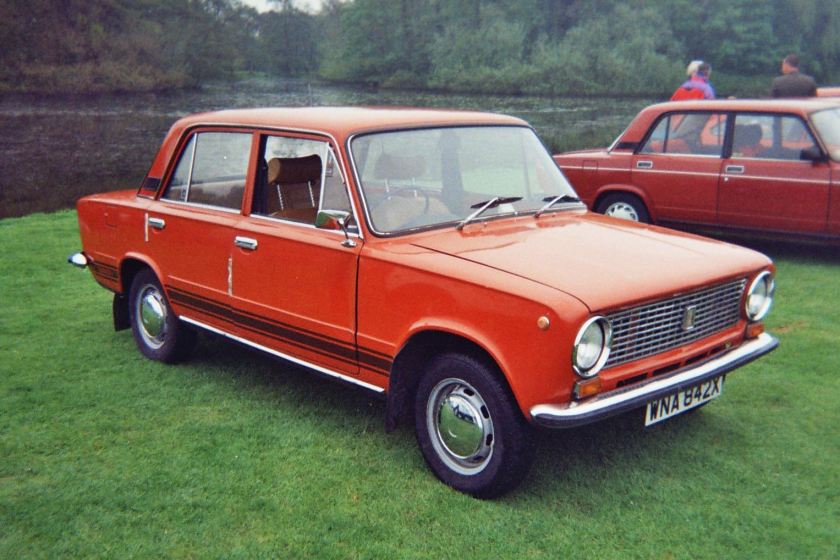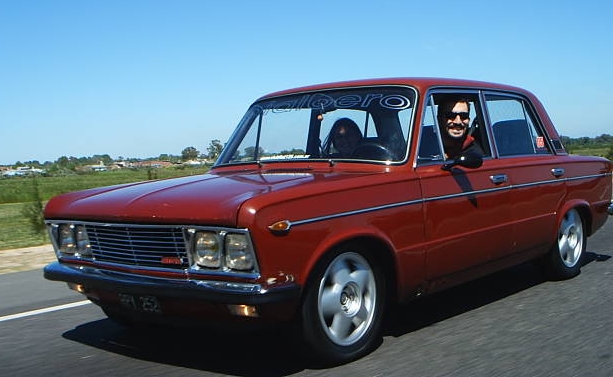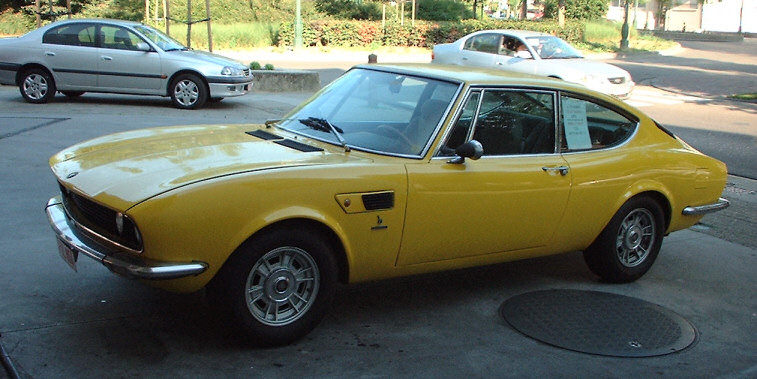HISTORY FIAT
Part II
1930-1939
1931 Fiat 522
| Fiat 522 | |
|---|---|
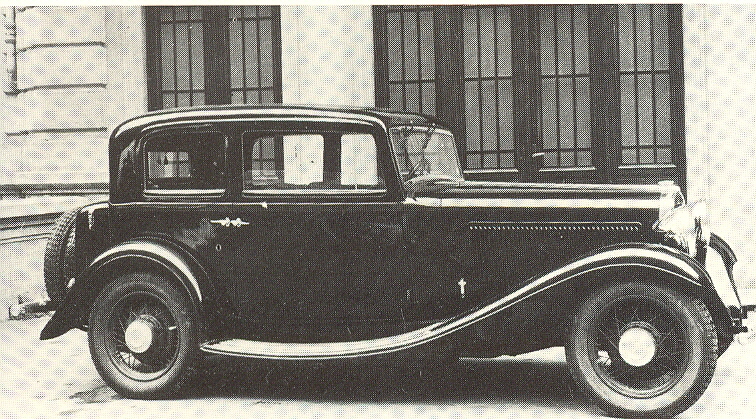 |
|
| Overview | |
| Manufacturer | Fiat |
| Production | 1931-1933 |
| Body and chassis | |
| Body style | 2/4-door sedan 2-door coupé 2/4-door cabriolet 4-door torpedo |
| Layout | FR layout |
| Powertrain | |
| Engine | straight-6 2516 cc 52 hp (39 kW) |
| Transmission | 4-speed manual |
| Dimensions | |
| Wheelbase | 278 cm (109.4 in) (522 C) 280 cm (110.2 in) (522 S) 307 cm (120.9 in) (522 L) |
| Curb weight | 1,300 kg (2,900 lb)-1,400 kg (3,100 lb) |
| Chronology | |
| Predecessor | Fiat 521 |
| Successor | Fiat 527 |
The Fiat 522 is a passenger car produced by Fiat between 1931 and 1933. The 522 was offered in three different body styles : 522C (SWB), 522L (LWB) and 522S (Sport).
The engine was an 2,516 cc in-line six-cylinder with a claimed output of 52 bhp (39 kW) or 65 bhp (48 kW) for the Sport version. The car also featured a four-speed all-syncromesh transmission, which set this Fiat ahead of its time.
The 522 was the first model to feature Fiat’s subsequently familiar rectangular logo: the badge used here employed gold lettering on a red background.
Almost 6,000 examples of the 522 were produced. A Fiat 522 CSS was also offered: in this version, the car had a higher compression ratio and twin carburetors.
-
Fiat 522 C Sedan 1931
1931 Fiat 524
Fiat 524 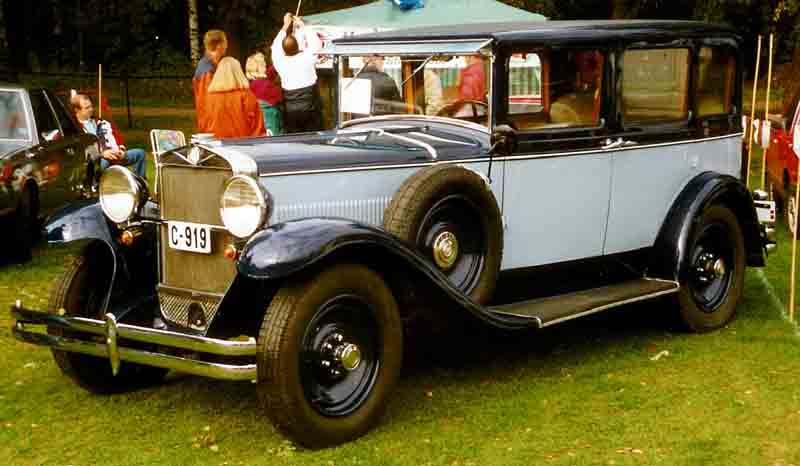 Fiat Tipo 524 C Berlina
Fiat Tipo 524 C BerlinaOverview Manufacturer Fiat Production 1931-1934 Body and chassis Body style 4-door cabriolet
4-door limousine
4-door saloonLayout FR layout Powertrain Engine straight-6, 2516 cc, 52 hp Transmission 4-speed manual Dimensions Wheelbase 307 cm (120.9 in) (524 C)
323 cm (127.2 in) (522 L)Curb weight 1,400 kg (3,100 lb)-1,600 kg (3,500 lb) Chronology Predecessor Fiat 525 Successor Fiat 527 Fiat 524 is a model of car produced by Italian automotive manufacturer Fiat between 1931-1934. The 524 was bigger and more luxurious version of Fiat 522 model. 10135 cars were produced in total.
A Polish version was also built in Warsawa plant badged Fiat-Polski 524.
Model types
-
Fiat 524 L Series2 Sedan 1933
1932 Fiat 508
Fiat 508 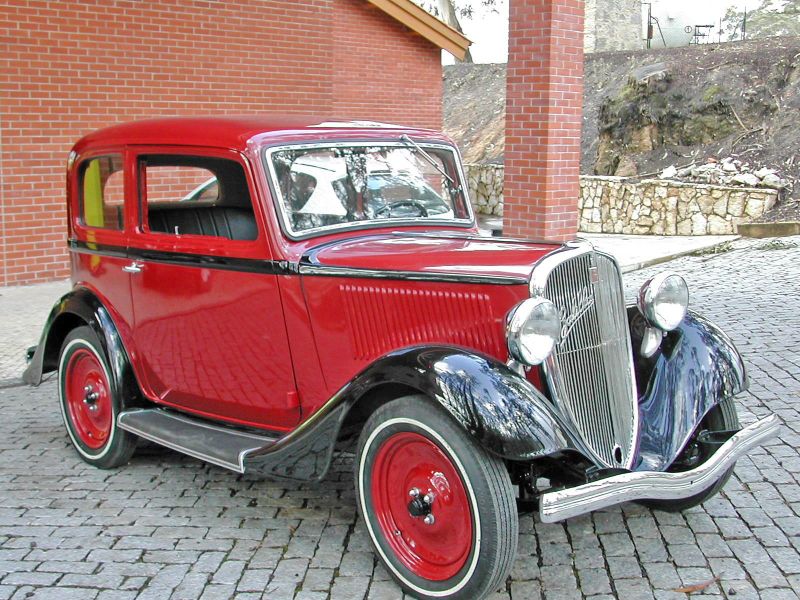 Fiat 508B Rocnik 1934
Fiat 508B Rocnik 1934Overview Manufacturer Fiat Also called Fiat 508 Balilla Production 1932–1937 Assembly Lingotto, Italy
Warsaw, Poland
Neckarsulm, Germany
Suresnes, France
(French assembly subsequently transferred to Nanterre, France)Body and chassis Body style Sedan
Coupe
Spider
TorpedoLayout FR layout Powertrain Engine straight-4 995 cc Transmission 3-speed manual Dimensions Length 3,140 mm (123.6 in) Width 1,400 mm (55.1 in) Height 1,530 mm (60.2 in) Curb weight 685 kg (1,510 lb) Chronology Predecessor Fiat 509 Successor Fiat 1100 Balilla (508C) The 508 Balilla was a car introduced by Fiat in 1932. It effectively replaced the Fiat 509, although production of the earlier model had ceased back in 1929. It had a three-speed transmission (increased to four in 1934), seated four, and had a top speed of about 50 mph (80 km/h). It sold for 10,800 lire (or 8,300 2005 euro). About 113,000 were produced.
The car was also assembled by Walter Motors a.s. in Czechoslovakia, in the Centralne Warsztaty Samochodowe factory in Poland, by NSU-Fiat in Germany and by “SAFAF” (rebranded in 1934 as “Simca-Fiat”) in France.
Background
The car was developed by some of the leading Italian automotive engineers of the day, including Nebbia, Fessia, Giacosa and Tranquillo Zerbi. The goal was to incorporate some of the qualities of a high class automobile into a modestly priced vehicle. The car had its unveiling on 12 April 1932 at a motor show being held on the Fiera Milano trade fair site.
The “Balilla” soubriquet
Many believe that the “Balilla” name was connected with Italian Fascism, but the provenance of the name was actually far older than the Italian Fascist movement. “Balilla” was the dialect-nickname of a Genovese boy called Giovanni Battista Perasso, who back in 1746 threw a stone – according to one report several stones – at an Austrian officer in protest over the Austrian military occupation. The action triggered a Genoese revolt against the Austrians and for this Balilla was celebrated as a local hero in Northern Italy through the intervening two centuries. The story of “Balilla” is nevertheless one of many popular heroic tales from history to have gained in prominence in the early decades of the twentieth century, given the heightened nationalism characteristic of the period. Fiat themselves had earlier used the name on the Fiat A1 aeroplane: it had also been used by a Milan based firm as the name for a tractor, and by Royal Italian Navy for a class of submarine.
Fiats 508A (1932 – 1934) and 508B (1934 – 1937)
The first 508 came with a front mounted four cylinder petrol/gasline side-valve engine of 995cc. Maximum power was listed as 20 hp (15 kW) at 3500 rpm, providing for a top speed of approximately 80 km/h (50 mph). Power passed to the rear wheels through a 3-speed manual gear box without the assistance of synchromesh on any of the ratios. Stopping power was provided by drum brakes on all four wheels.
At the end of 1933 power was increased to 24 hp (18 kW) at 3500 rpm, and the maximum speed went up to 85 km/h (53 mph). Transmission was upgraded to a four speed gear box. For 1934 the car now came with a slightly more aerodynamic looking “berlina” (saloon/sedan) body, available with either two or four doors. This version was identified as the Fiat 508B, and the original 1932 model was now, retrospectively, became the Fiat 508A.
Engines
The Fiat 508 was fitted with a 995 cc side valve engine.
Model Years Engine Displacement Power Fuel system 508 1932–37 straight-4 side valve 995 cc 20-24 hp single carburetor 508 S 1933–37 straight-4 side valve 995 cc 30-36 hp single carburetor Body versions
Berlina
The first 508A, introduced in 1932, was a 2-door “Berlina” (saloon/sedan) with four seats and a three speed “crash” gearbox. The front seats could be slid forwards and the backrests tilted in order to facilitate access to the back seat in what was a relatively small car. Unusually, the windows in the doors could be wound down by turning a crank handle fitted to the door, while the windscreen was hinged at the top and could be opened, while two windscreen wipers were powered by their own electric motor, positioned inside just above the windscreen. The interior used rubber mats while the seats were cloth covered. Accessories offered included a dash-mounted rear-view mirror, an interior light mounted on the centre of the roof and an externally mounted luggage platform at the back which, when specified, came with the spare wheel repositioned to a mounting point on the side of the car between the left-side door and the front wing. A “Lusso” (“de Luxe”) version also featured a better type of cloth covering for the seats as well as extra bright work around the lights, front grille, wheels and door handles.
With the 508B, introduced early in 1934, the body was described as “more aerodynamic” although from the perspective of later developments in car styling, the 508B still followed the rather boxy lines associated with cheap cars from the early 1930s. The gear box was upgraded, now offering four forward speeds, and while the a 2-door “Berlina” remained on offer for a few more months, a 4-door “Berlina” was now added. In June of the same year the 2-door “Berlina” was delisted for Italy and there was a further face-lift for the 4-door bodied car, which now received a modified front grille and a windscreen, previously vertical, that was slightly raked, hinting at the more wholesale styling changes that would accompany the appearance in 1937 of the 508C version of the car. Standard and “Lusso” versions of the 4-door “Berlina” were both offered.
Spider
The 508 “Spider” was a small 2-door two seater cabriolet bodied car. The driver and passenger sat side by side, but the driver’s seat was fixed a few centimetres further back than the passenger seat. On the Spider the seat coverings were made from leather. The car was available in both standard and “Lusso” (“de Luxe”) versions. The windscreen could be folded down and the removable fabric hood could be stored in a suitably shaped storage bag provided for the purpose. The early “Spider” came with the same three-speed “no-synchromesh” gear-box as the “Berlina”. However, it benefited mechanically from the 1934 upgrade, switching to a four-speed transmission. In the case of the “Spider”, however, the 1934 upgrade was not accompanied by any change to the body shape.
Torpedo
A “Torpedo” bodied 508 was added to the range in 1933, with four seats and four doors, and in 1933 still with the 3-speed “crash” gear-box. It was offered only with the “Lusso” (“de Luxe”) trimmings. As on the “Spider”, seat covers and interior trimmings used coloured leather. The windscreen pillars and door hinges were chrome plated, and the removable fabric hood could be stored in a suitably shaped storage bag provided for the purpose. The upgrade to a four speed transmission in 1934 was not accompanied by any aesthetic changes to the “Torpedo” bodywork.
The Italian military was active in Tripolitania (now known as Libya) during this period, and a special “Torpedo Coloniale” was produced, sharing the features of the regular 508 Torpedo, but this car came with wider tyres and was painted the colour of sand.
Spider Sport
A lower sleeker shape than the “Spider”, styling for the 2-seater “Spider Sport” included a distinctive tail treatment which attracted the catch-phrase “insect tail”, designed in 1933 by Ghia and said to have been inspired by small roadster bodied English cars of the period. The early “Spider Sport” models came with the same crash gearbox as the other cars, but the engine was fed by a special carburetor, which with its raised compression ratio of 7:1 gave rise to a maximum output listed as 30 hp (22 kW) at 4,000 rpm. The final drive ratio was also altered, and top speed went up to 110 km/h (69 mph). Fiat 508s with this body type were assembled by Fiat in Italy, and were also included in the production schedules of Fiat affiliates/subsidiaries Germany, France and Czechoslovakia. Various small scale enhanced versions appeared including, possibly most notably, the Fiat 508S, known as the “Fiat 508 Coppa d’Oro” (“Gold Cup“), especially prized by collectors 75 years later. The “Spider Sport” received the transmission upgrade to 4 speeds in 1934 together with a special overhead valves (at a time when other 508 variants still came with a side valve engine) and other technical enhancements which pushed the power up to 36 hp (27 kW). The most sporting versions advertised their performance aspirations with a more steeply tapered Tail section
Coupé
Launched in 1935, the “Coupé” bodied 508 (also sometimes known as the “Berlinetta Mille Miglia”) shared its mechanical elements, including the more powerful 108CS engine, with the “Spider Sport”. The body was a 2-seater aerodynamic Berlinetta, intended for competition use in colder climates such as those encountered in Northern Italy during the “Mille Miglia” (then run in late Winter). The Coupé may have been warmer in cold weather than the Spider Sport, but it was also heavier: competition success proved elusive.
Van
A commercial version of the Balilla was offered, both as a panel van or as a small flat-bed truck, with a 350 kg load capacity, based initially on the 3-speed 508A and later on the 4-speed 508B.
Foreign assembly
Poland
As well as being assembled at Turin in Italy, three successive versions of the car were produced in Poland where it was branded as the “Polski-Fiat 508” and priced at 5,400 Zł.
The arrangement was based on an agreement dated 21 September 1932 and provided for the assembly of the car by Centralne Warsztaty Samochodowe in Warsaw. Assembly progressed to full-scale production and the 508 became the country’s top selling passenger car for a period during the 1930s. There were few paved roads in Poland at this time, and both the chassis and the axles of the car were strengthened, and the suspension was modified, in order to cope with the relatively harsh operating conditions resulting from the quality of the roads and of the Polish winter. 20 hp (15 kW) of power came from the same 995cc engine as in the Italian car, however, and the Polish cars benefited, in 1935 from the upgrade that in Italy gave birth to the “508B”, although the upgraded Polish version was known as the “508 II”.
Production was abruptly halted by the outbreak of war and precise production statistics do not survive; but it is apparent that the Polish output of Fiat 508s ran to several – probably many – thousand.
Germany
In Germany a motor bike manufacturer called NSU Motorenwerke AG had recently been persuaded by the dire state of the economy (and by their bankers) to abandon ambitious plans to become an automobile producer, and to sell their car plant plant to anyone who could be found to buy it. NSU found Fiat who thereby in 1929 acquired for One Million Marks a nearly new purpose built car plant near Heilbronn. The 508 Balilla was one of the first two models to be built at the plant It was badged as a “Fiat-NSU” between 1934 and 1938, and as an “NSU-Fiat” between 1938 and 1941 (though Fiat’s right to use the NSU name on Fiat passenger cars assembled in Germany would 25 years later become the subject of a noisily litigious dispute).
Production was halted by the outbreak of war and precise production statistics are not available, but it is thought that approximately 11,000 Fiat 508s were produced in Germany between 1934 and 1941 of which approximately 6,000, built between 1934 and 1938, were local equivalents of the 508A and the 508B.
France
The Fiat 508 Balilla was assembled in France under license from Fiat between 1932 and 1937, and is remembered in retrospect as the first Simca-Fiat. However, the “Simca-Fiat” business did not exist until 1934/35, and when, in 1932, French assembly started the car would have been known simply as a Fiat 6CV assembled in France by a company called “SAFAF”. At this stage the cars were assembled in a small-workshop style factory in Suresnes near Paris. Most of the French auto-makers and their suppliers were based in the Paris region, and it proved practical and cost-effective to source many components and sub-assemblies locally, while taking care to maintain a disparate supplier base of smaller companies in order to avoid over dependence on any supplier and, it was said, lower the risk of abusive copying in France of Fiat component designs.
From the start, the French assembled Fiat 6CV was available as a “berline” (four-door saloon/sedan), a “coach” (two-door saloon/sedan), a “coupé” and a “roadster”, and subsequently the range of body variant would be widened further. Power came, as in the Italian built cars, from a 995cc side-valve engine for which, initially, maximum power was listed as 20 hp (15 kW) at 3,400 rpm.
In November 1934 production at Suresnes came to an end when Fiat acquired the plant of the recently defunct auto-maker “Donnet“, in the west of the country. It was at this point that Fiat funded and created the Société Industrielle de Mécanique et de Carrosserie Automobile (Simca). The move to the more spacious Nanterre facility permitted an increase in volumes which enabled the manufacturer to become one of the country’s top tier automakers by the end of the decade. The name “Simca” was now introduced to French customers, the French built Fiat 508 being rebranded as the Simca-Fiat 6CV. In a culture of heighened political awareness and growing polarisation, there was some hostility to things Italian, at least from the French left, and especially in the build up to Mussolini’s Abyssinian invasion. Simca’s (originally Italian) boss, Henri Pigozzi, was more attuned than most automobile bosses to the power of skilful marketing, and Simca-Fiat publicity of the period increasingly down-plays Fiat ownership: by 1936 its new models were being branded simply as Simcas.[4] The Simca-Fiat 6CV nevertheless retained the Ballila engine and other mechanical components, and it continued to look like a Fiat.
The Simca-Fiat 6CV made its last Motor Show appearance in October 1937. By this time three slightly bowed thin chrome stripes had appeared on each side of the bonnet/hood, representing the tail of a comet, and for its final year in production, the car was rebaptised as the “Simca-Fiat 6CV Comète”. The list of different body variants produced by Simca in Nanterre extended to eight “different” shapes, though most of the steel body panels would have been common to several different shapes. The eight bodies featured in the 1937 show material were a 2-door “berline” (saloon/sedan), a 4-door “berline”, a coupé, a cabriolet, a roadster, a “commerciale” (sharing most of the silhouette of the 2-door “berline” but with an opening tailgate) and a “fourgonette” (panel van).However, the Simca list did not include a “Torpedo” bodied car.
By the time the model was replaced in France by the Simca 8 (based on the next generation of the Fiat 508 Balilla) 26,472 of the cars had been built by Simca in Nanterre or its predecessor company, “SAFAF”, in Suresnes.
Czechoslovakia
The 508 was also produced at Prague-Jinonice by Walter a.s. under designation Walter Junior. Production started in autumn 1932; till 1936, little over one thousand vehicles were built. All produced Juniors got only three-speed gearbox. Prices started at 27,500Kč for two-door saloon.
Fiat 518
| Fiat 518 Ardita | |
|---|---|
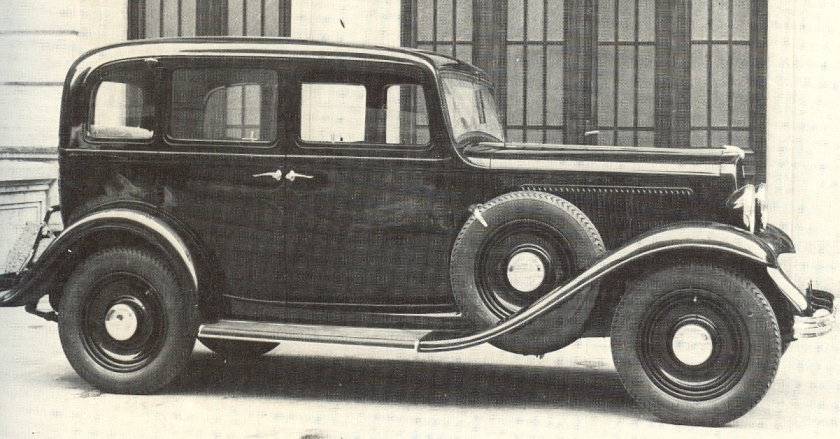
Fiat 518 C Sedan 1933
|
|
| Overview | |
| Manufacturer | Fiat |
| Production | 1933-1938 |
| Body and chassis | |
| Body style | 2/4-door sedan 2/4-door cabriolet 2-door spyder |
| Layout | FR layout |
| Related | Fiat 527 |
| Powertrain | |
| Engine | 1,758 cc or 1,944 cc straight-4 |
| Transmission | 4-speed manual |
| Dimensions | |
| Wheelbase | 270 cm (106.3 in) 300 cm (118.1 in) (518 L) |
| Length | 404 cm (159.1 in) 2d 434 cm (170.9 in) 4d |
| Curb weight | 1,200 kg (2,600 lb)-1,300 kg (2,900 lb) |
| Chronology | |
| Predecessor | Fiat 514 |
| Successor | Fiat 1500 |
The Fiat 518 Ardita was a model of car produced by Italian automotive company, Fiat between 1933 and 1938. There was also a 2.5-liter version called “Ardita”, this has the model code 527.
8.794 were produced in total in Italy.
About 2,200 were built as Simca-Fiat 11CVs in France, all fitted with the 1,944 cc engine of 45 PS (33 kW).
A Polish version, the Polski Fiat 518 Mazur was produced between 1937 and 1939 by PZInż in Warszawa under Fiat license. The car has 4 doors and 7 or 5 seats. It used the two-litre Fiat 118 engine (PZInż 157) (45 hp (33 kW) at 3,600 rpm, compression rate of 6,1:1) and a four-speed gearbox. The car weights 1,070 kg (2,359 lb) and has top speed of 100 to 110 km/h (62 to 68 mph) and has fuel consumption of 11.5 L/100 km (25 mpg-imp; 20.5 mpg-US).
Types
Saloon, 4 doors, 7 seats
- Saloon, 4 doors, 4 seats(+ sports saloon type also)
- Tourer, 2 doors, 2+2 seats
- PZInż 302 used by the Polish military as artillery tractor
| Model | Engine | Displacement | Power | at rpm | Fuel system |
|---|---|---|---|---|---|
| 1750 | straight-4 sidevalve | 1,758 cc | 40 hp | single carburetor | |
| 2000 | straight-4 sidevalve | 1,944 cc | 45 hp | 3,600 | single carburetor |
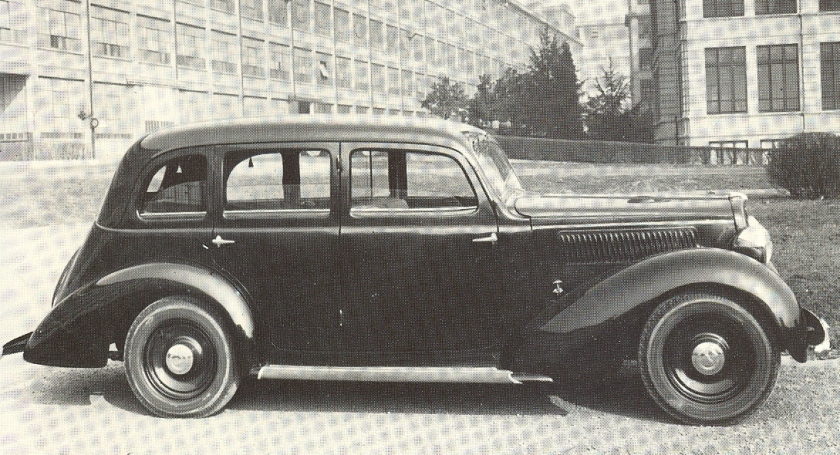 1933 Fiat 518 L (long wheel base)
1933 Fiat 518 L (long wheel base)
- 1934 Fiat 527
Fiat 527
| Fiat 527 | |
|---|---|
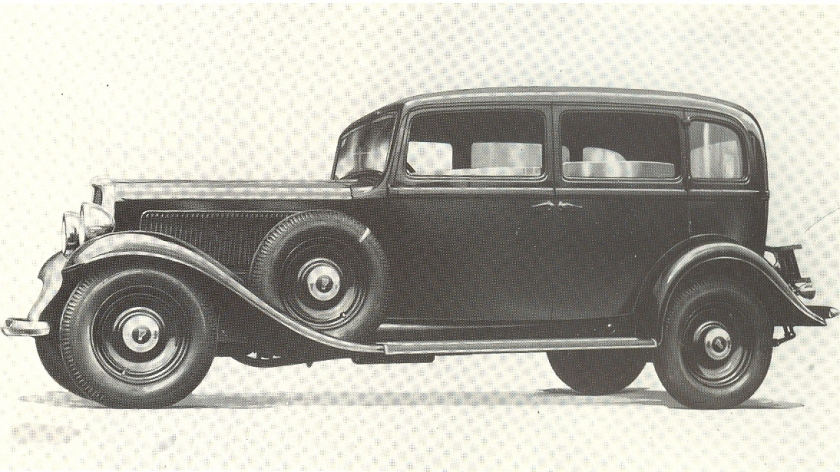 Una Fiat 527 berlina del 1934 |
|
| Descrizione generale | |
| Costruttore | |
| Produzione | dal 1934 al 1936 |
| Sostituisce la | Fiat 518 Ardita |
| Sostituita da | Fiat 2800 |
| Altre caratteristiche | |
| Dimensioni e massa | |
| Lunghezza | 4505 (versione berlina) – 4880 (versione S) mm |
| Larghezza | 1670 mm |
| Altezza | 1769 (versione berlina) – 1596 (versione S) mm |
| Passo | 3170 mm |
| Massa | 1400 kg |
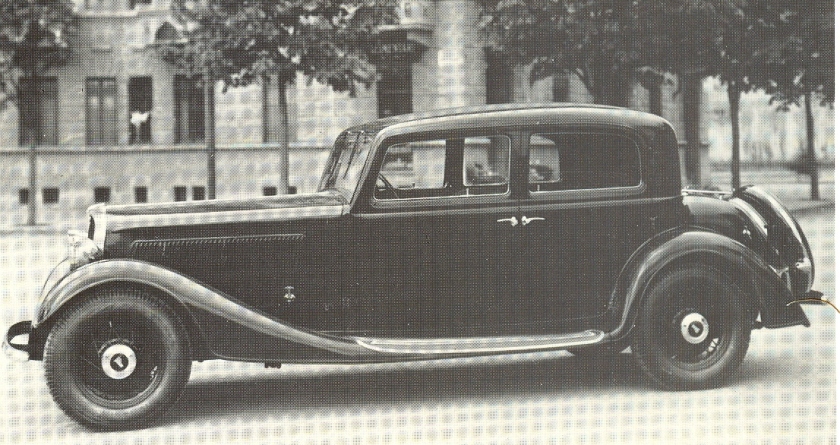 Una Fiat 527 versione sport del 1934 |
|
La Fiat 527, conosciuta anche come Ardita 2500, è stata un’autovettura di lusso prodotta dalla Fiat dal 1934 al 1936.
Il contesto
Questa vettura fu la terza della gamma Ardita, che comprendeva già la 518 con le sue due motorizzazioni:
- 1750: aveva installato un motore da 1758 cc di cilindrata a quattro cilindri sviluppante 40 cv a 3600 giri/min;
- 2000: aveva montato un motore da 1944 cm³ da 45 cv di potenza.
La 2500 è stata invece fabbricata dal 1934, ed era equipaggiata da un motore in linea a sei cilindri da 2516 cc , erogante 52 cv , con valvole in testa. Aveva un solo carburatore. Il cambio era sincronizzato a quattro rapporti ed era a trazione posteriore. I freni erano sulle quattro ruote, mentre il freno di stazionamento era sull’albero di trasmissione . L’accensione era a batteria . È stata commercializzata nelle versioni berlina ed S (sport, con motore potenziato a 60 cv a 3800 giri/min), tutte e due con un passo di 3170 mm . La velocità massima era di 110 km/h per la versione berlina e 115 km/h per la S.
In Italia saranno fabbricati più di 1000 esemplari: a differenza della Fiat 518 Ardita non è stata costruita anche in paesi esteri.
Fiat 1500 (1935)
| Fiat 1500 | |
|---|---|
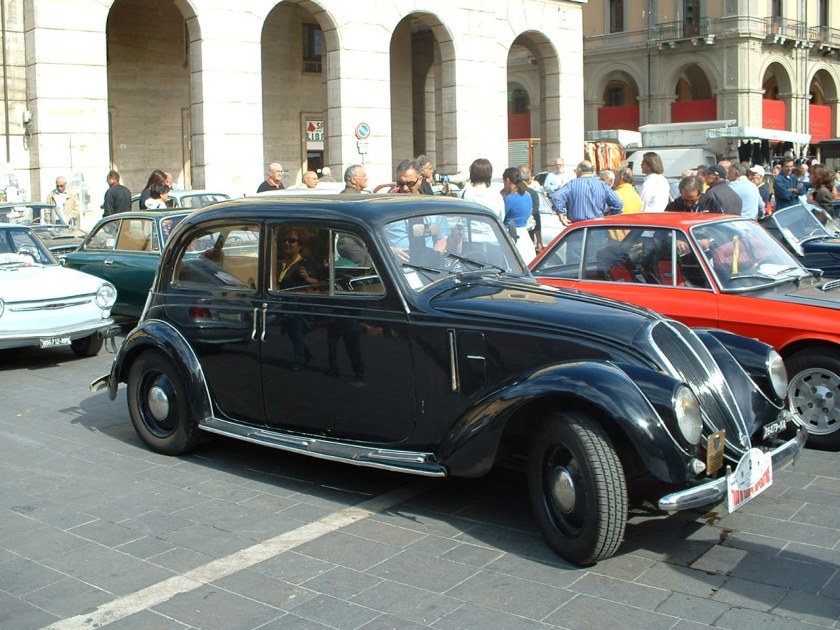
Fiat 1500 B, 1938
|
|
| Overview | |
| Manufacturer | Fiat |
| Production | 1935–1950 |
| Body and chassis | |
| Body style | sedan |
| Layout | FR layout |
| Powertrain | |
| Engine | straight-6 1493 cc |
| Chronology | |
| Predecessor | Fiat 514 |
| Successor | Fiat 1400 |
- This article is about the 1930s-50s models – there were also entirely different Fiat 1500s manufactured from 1961 to 1967.
The Fiat 1500 was a car produced by the Fiat from 1935 to 1950. The car was introduced in Salone dell’Automobile di Milan in 1935. It was one of the first cars tested in a wind tunnel, following the Chrysler Airflow produced one year earlier. The styling was by the emerging designer, Giacosa, who achieved an aerodynamic efficiency unequalled before it in a touring car, and (contrary to the failure of the “lumpen” Airflow) disproved the thesis aerodynamic cars would not sell.
The second series 1500B, with better brakes, was introduced in 1939, and in 1940, the 1500C, with a redesigned front end.
In 1949, the 1500E appeared, having some exterior changes and the external spare wheel moved inside the car.
Fiat 1100
| Fiat 1100 | |
|---|---|
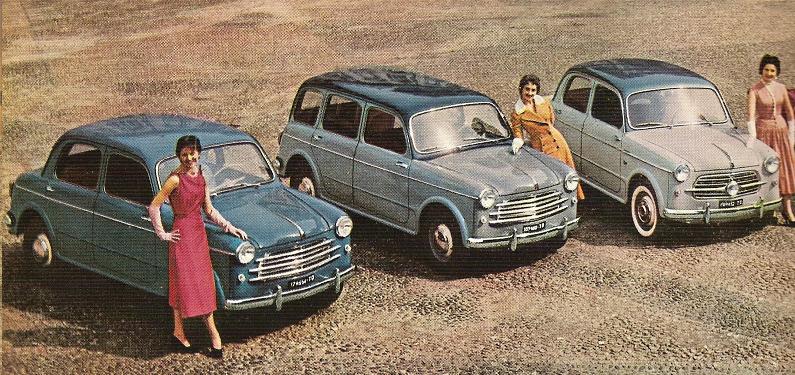
Various versions of the 1100/103 (spring 1955). From right to left: 103 Berlina (sedan), Familiare (estate), Berlina TV (Turismo Veloce).
|
|
| Overview | |
| Manufacturer | Fiat |
| Production | 1937–1969 |
| Assembly | Italy Australia Casablanca, Morocco Ferreyra, Argentina |
| Body and chassis | |
| Class | Compact car |
| Body style | Saloon Convertible Cabriolet Estate |
| Layout | FR layout |
| Related | Premier Padmini (1100D) Neckar Europa |
| Powertrain | |
| Engine |
|
| Transmission | 4-speed manual |
| Chronology | |
| Predecessor | Fiat 508 “Balilla” |
| Successor | Fiat 128 |
The Fiat 1100 is a compact automobile produced from 1937 to 1969 by the Italian car maker Fiat. It was built in several generations, with a separate chassis (until 1953) and then monocoque bodywork. The 1100 was changed steadily and gradually until finally being replaced by the inventive new Fiat 128 in 1969. There were also a series of light commercial versions of the 1100 built, with later models called the Fiat 1100T, which remained in production until 1971. The Fiat 1100D also found a long life in India, where Premier Automobiles continued to build the car until the end of 2000.
508C Nuova Balilla 1100
The Fiat 1100 was first introduced in 1937 as an updated version of the 508 “Balilla” (its real name was the 508C) with a look similar to the 1936 Fiat 500 “Topolino” and the larger 1500, with the typical late-thirties heart-shaped front grille, with styling by the emerging designer Dante Giacosa. It was powered by a 1,089 cc four-cylinder overhead-valve engine rather than the earlier Balilla’s 1-litre unit. Power was up by a third, to 32 PS (24 kW) at 4000 rpm. There was also a more sporting model on offer, the 42 PS (31 kW) “508 CMM”.
Drive was to the rear wheels through a four-speed gearbox, and for the period, its comfort, handling, and performance were prodigious, making it “the only people’s car that was also a driver’s car”. Unusual for a modestly priced car of the time was the independent front suspension, while the rear had a leaf sprung live axle. Subsequently the car underwent a partial restyling around the front end and gained new streamlined window-shaped louvres and was renamed the 1100B and was popularly known as the “1100 musone” (i. e. “big nose”). After World War II, in 1949, the car was re-introduced with a curvy trunk and new name, the 1100E. The 1100E also received a bit more power, and now had 35 PS (26 kW). Both the 508C and the 1100B were also available as the long wheelbase 508L which was mainly used for vans and taxis.
1100–103
In 1953, the 1100 was completely redesigned as a compact four-door sedan, with a modern monocoque bodywork and integrated fenders and front lights. The new model was called the 1100/103 after its project number, and was offered (as usual at that time) in two different versions: “economica” (cheaper) and “normale” (standard). In October 1953, the car became available in a sporty version, the 1100TV (Turismo Veloce) with a third light in the middle of the grille and 51 PS (38 kW) rather than the 36 PS (26 kW) of the regular versions. It was also available in station-wagon version, with a side-hinged fifth door at the back.
In March 1955, the 1100/103 Trasformabile, a two-seater roadster, was introduced at the Geneva Motor Show. Equipped with the mechanics from the 1100TV, the American-inspired design was the work of the special bodies division of Fiat (Sezione Carrozzerie Speciali). 571 of these first series Trasformabiles were built. In 1956 it received a more powerful engine (three more horsepower) and a modified rear suspension; 450 more of these were built. From 1957 the Trasformabile was equipped with the more powerful 55 PS (40 kW) “1200” engine (1,221 cc). Production of this model continued until 1959, with circa 2,360 of the 1.2 liter Trasformabiles built. The 1.2 also received slight changes to the front and rear design, with bigger headlights being the most noticeable difference.
Between 1956 and 1960, the new 1100 underwent several slight changes in fittings and details, e.g. newly designed grille, more rectangular profile, dual color dressing, and eventually small fintails with spear-shaped backlights. A special version, the 1100 Granluce (i.e. “Large light”), no longer with rear-hinged-doors, launched in 1959, had both fintails and wider windows. As an option it could be fitted with a new powerful 1221 cc engine.
The Fiat 1100/103 was imported and sold by Premier Automobiles Limited (PAL). The older model was known as the Millecento and the one with the center light on the front grille as the Elegant. In 1958, the fintail model was introduced as the Select. It was followed by the Super Select in 1961. By 1964, the 1100D was introduced and it was assembled in India by PAL. This model has most of the parts manufactured locally. In India it was considered a sportier alternative than the Hindustan Ambassador.
1100D
Retaining the exterior changes of this model, in 1962 Fiat introduced the third generation 1100, called the 1100D (“D” stood for Delight). It was a sober yet comfortable four-door sedan, very similar to the Granluce but with simpler sides and a new simpler rectangular front end. The 1100D was a successful Italian Standard in the early sixties and along with its own Estate or Family car version and a Deluxe model that offered a higher performance of 50 PS (37 kW), extra side moldings, front bench seat with two reclining backs and carpet floor mats. These survived without any substantial alteration until 1966, when the introduction of the groundbreaking 124 model imposed a further change in styling. Power was 40 PS (29 kW) at the time of introduction, which was soon increased to 43 PS (32 kW).
The Fiat 1100D was manufactured under licence in India by the Premier Automobiles Limited beginning in 1964. The vehicle was initially marketed as the Fiat 1100D, as the Premier President for model year 1972, and as the Premier Padmini since 1974 until its discontinuation in 2000. By 1993, a diesel version with a 1366 cc diesel engine made in collaboration with FNM from Italy and was badged as the Premier Padmini 137D.The car manufacturing plant was closed down by 2000.
1100R
The very last 1100 model, born in February 1966, was the 1100R (“R” stood for Rinnovata). It had a longer, straighter and slimmer line, with a square back and a front-end look not very different from its bigger sister the Fiat 124. In terms of styling cues, the vestigial fins were further suppressed and the simple round rear light cluster from the Fiat 850 replaced the vertical form seen on the 1100D. At the same time, the larger engine was withdrawn in order to avoid undue overlap with the 124. The 1100R was offered only with the older 1,089 cc engine, now with a compression ratio of 8:1 and a claimed output of 48 bhp (36 kW). This engine (with a somewhat narrower bore) had been first introduced in the 1932 Balilla.
Clutch and gearbox were little changed, but the return of a floor mounted gear lever positioned between the front seats and connected to the gearbox with a rod linkage system was welcomed by the motoring press. The absence of synchromesh on the bottom forward speed nevertheless offered a reminder that under the surface this was becoming a somewhat aging design. Between the gearbox and the differential, the propeller shaft had now been separated into two parts with three couplings.
The boot was usefully expanded, helped by a slight increase in the car’s overall length, and with more careful packaging of the spare wheel (under the floor) and the fuel tank (in the rear wing on the right). As configured for UK sales, reclining front seats were available as an optional extra for £8.
The 1100R finally gave way in 1969 to the new middle-class Fiat 128. It was also assembled by the Neckar-Automobilwerke in Heilbronn, Germany. Called the Neckar 1100 Millecento it only differed lightly in trim.
1100T
The 1100T was made from 1957 as a van, pickup and bus. The car was equipped with a in-line engine with 1,089 cc (type 103 D.007) with 38 PS (28 kW) at 4800 rpm and it had a top speed of 90 km/h (56 mph). In 1959, its successor was unveiled, the Fiat 1100 T2, that had a 45 PS (33 kW) 1,222 cc engine. Production continued with a steady stream of updated engines, until production of the 1100 T4 finally came to an end in 1971.
1937 Fiat 500 “Topolino”
| FIAT 500 “Topolino” | |
|---|---|
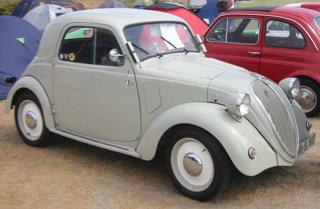 |
|
| Overview | |
| Manufacturer | FIAT |
| Also called | Topolino |
| Production | 1936–1955 520,000 made |
| Body and chassis | |
| Class | Micro car |
| Body style | 2-door coupé 2-door cabriolet 3-door station wagon |
| Layout | FR layout |
| Related | Simca 5 Simca 6 |
| Powertrain | |
| Engine | 569 cc straight-4 sidevalve |
| Transmission | 4-speed manual |
| Dimensions | |
| Length | 3,215 mm (127 in) |
| Width | 1,275 mm (50 in) |
| Height | 1,377 mm (54 in) |
| Chronology | |
| Successor | FIAT 600 |
The FIAT 500, commonly known as “Topolino“, is an Italian automobile model manufactured by FIAT from 1936 to 1955.
The name “Topolino” translates literally as “little mouse” in Italian, but is also the Italian name for Mickey Mouse.
History
The Topolino was one of the smallest cars in the world at the time of its production. Launched in 1937, three models were produced until 1955, all with only minor mechanical and cosmetic changes. It was equipped with a 569 cc four-cylinder, side-valve, water-cooled engine mounted in front of the front axle,( later an overhead valve motor ) and so was a full-scale car rather than a cyclecar. The radiator was located behind the engine which made possible a lowered aerodynamic nose profile at a time when competitors had a flat, nearly vertical grill. The shape of the car’s front allowed exceptional forward visibility.
Rear suspension initially used quarter-elliptic rear springs, but buyers frequently squeezed four or five people into the nominally two-seater car, and in later models the chassis was extended at the rear to allow for more robust semi-elliptic springs.
With horsepower of about 13 bhp, its top speed was about 53 mph (85 km/h), and it could achieve about 39.2 miles per US gallon (6.00 L/100 km; 47.1 mpg-imp). The target price given when the car was planned was 5,000 lire. In the event the price at launch was 9,750 lire, though the decade was one of falling prices in several part of Europe and later in the 1930s the Topolino was sold for about 8,900 lire. Despite being more expensive than first envisioned, the car was competitively priced. Nearly 520,000 were sold.
Three models were produced. Model A and B shared the same body, only the engine of model B had 16 hp, vs. 13 hp of model A. Model A was produced from 1937. till 1948., while B was produced 1948. and 1949. Model A was only a 2-door sedan, while Model B also introduced a 3-door wagon under the name 500 B Topolino Giardinetta (“station wagon, estate car”). Model C started in 1949. with restyled body and the same engine as Model B, and was offered in 2-door sedan and 3-door wagon versions. Since 1952., Giardinetta was renamed Belvedere (“A turret or other raised structure offering a pleasant view of the surrounding area”, referring to its sunroof). Model C was produced until 1955.
In 1955 the mid-size rear wheel drive FIAT 600 was launched by Fiat and that would become the design basis for the new FIAT 500, the Nuova 500.
Gallery
1938 Fiat Twelve Saloon
Fiat 2800
Il contesto
Pur riprendendo le innovazioni stilistiche della 1500 C la 2800 fu l’ultimo modello sostanzialmente nuovo uscito dalle fabbriche Fiat prima dello scoppio della seconda guerra mondiale. La sua progettazione venne proposta ai vertici Fiat da Benito Mussolini che voleva un’ammiraglia da “parata” da contrapporre alle Mercedes-Benz dell’epoca.
Sei vetture furono costruite in versione torpedo a 6 posti dagli Stabilimenti Farina, entrarono a fare parte del garage di Casa Reale al Palazzo del Quirinale divenendo le auto di rappresentanza in uso alla famiglia Reale e nel dopoguerra, dei primi Presidenti della Repubblica. Una di queste fu la vettura usata da re Vittorio Emanuele III durante la fuga da Roma alla volta di Pescara.
Lo stile e la meccanica
Stilisticamente anticipava nella linea del cofano e nel muso allungato la linea della nuova 1100 che uscirà l’anno successivo. La meccanica era invece quella standard Fiat del momento completata da un motore da 2 852 cm³ in grado di sviluppare una potenza di circa 85 CV (circa 62,5 kW). Un motore di così grande cilindrata non sarà più nei listini Fiat per molti anni, sino alla presentazione della Fiat 130.
Dal telaio della 2800 vennero anche tratte versioni speciali ad opera dei più noti carrozzieri come Pininfarina e Zagato.
La Fiat 2800 CMC
| Fiat 2800 CMC | |
|---|---|
| Descrizione | |
| Tipo | veicolo da collegamento |
| Costruttore | Fiat |
| Data impostazione | 1939 |
| Utilizzatore principale | |
| Sviluppato dal | Fiat 2800 |
| Dimensioni e peso | |
| Lunghezza | 4 795 mm |
| Larghezza | 1 275 mm |
| Altezza | 1 377 mm 1 768 mm con capote chiusa |
| Peso | 1,97 t |
| Capacità combustibile | 74 l |
| Propulsione e tecnica | |
| Motore | Fiat 2800 MC a benzina, 6 cilindri da 2 852 cm³ |
| Potenza | 85 CV |
| Trazione | 4×2 |
| Prestazioni | |
| Velocità max | 155 km/h |
| Autonomia | 300 km |
| Pendenza max | 25° |
|
|
|
Nel 1939 viene introdotta la Fiat 2800 CMC, ovvero Corta Militare Coloniale, impiegata dai comandi del Regio Esercito durante la seconda guerra mondiale. Essa differisce dal modello civile essenzialmente per le dimensioni più compatte, per la carrozzeria più squadrata e spartana e per gli pneumatici maggiorati da 4×18.
- 1939 Fiat 250
This was part II
Part III
1948-1965
1957 Fiat 500
| Fiat 500 | |
|---|---|
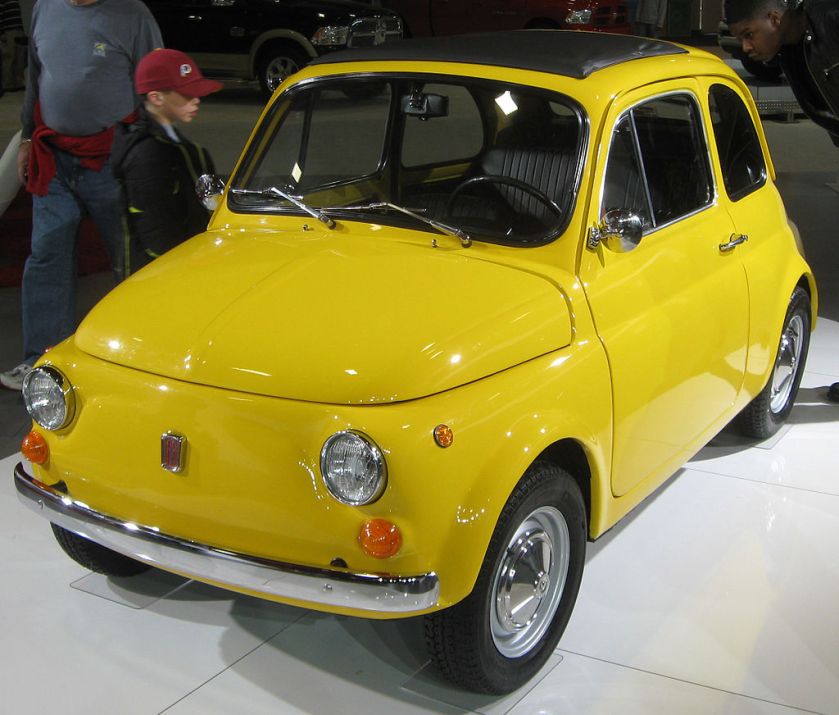 |
|
| Overview | |
| Manufacturer | Fiat |
| Production | 1957–1975 3,893,294 units |
| Assembly | Turin, Italy Desio, Italy Termini Imerese (PA), Italy |
| Designer | Dante Giacosa |
| Body and chassis | |
| Class | City car |
| Body style | 2-door saloon 3-door estate 3-door Panel van |
| Layout | RR layout |
| Related | Autobianchi Bianchina Puch 500 Vignale Gamine |
| Powertrain | |
| Engine | 479 cc I2 499 cc I2 594 cc I2 |
| Transmission | 4-speed manual |
| Dimensions | |
| Wheelbase | 1.84 m (72.4 in) |
| Length | 2.97 m (116.9 in) |
| Width | 1.32 m (52.0 in) |
| Height | 1.32 m (52.0 in) |
| Curb weight | 499 kg (1,100 lb) |
| Chronology | |
| Predecessor | Fiat 500 “Topolino” |
| Successor | Fiat 126 |
The Fiat 500 (Italian: Cinquecento, Italian pronunciation: [ˌtʃiŋkweˈtʃɛnto]) was a city car produced by the Italian manufacturer Fiat between 1957 and 1975.
Launched as the Nuova (new) 500 in July 1957, it was a cheap and practical town car. Measuring only 2.97 metres (9 feet 9 inches) long, and originally powered by an appropriately sized 479 cc two-cylinder, air-cooled engine, the 500 redefined the term “small car” and is considered one of the first city cars.
In 2007, the 50th anniversary of the Nuova 500’s launch, Fiat launched another new 500, stylistically inspired by the 1957 Nuova 500 but considerably heavier and larger, featuring a front-mounted engine and front-wheel drive.
History
To meet the demands of the post-war market which called for economy cars, in 1949 a front engine, Fiat 500 was released, a 2-door coupe body with sun-roof, this was later complemented by an Estate (Station Wagon) version; both continued until 1954 before replaced by the all new, lighter body car with rear engine, on the pattern of the Volkswagen Beetle, just like its bigger brother, the 1955 Fiat 600. Several car makers followed the now uncommon rear engine configuration at the time and were quite successful. The Neckar version manufactured in Heilbronn under a complicated deal involving NSU was introduced in October 1961. Steyr-Puch produced cars based on the Fiat 500 under license in Upper Austria.
Despite its diminutive size, the 500 proved to be an enormously practical and popular vehicle throughout Europe. Besides the two-door coupé, it was also available as the “Giardiniera” station wagon; this variant featured the standard engine laid on its side, the wheelbase lengthened by 10 cm (3.9 in) to provide a more convenient rear seat, a full-length sunroof, and larger brakes from the Fiat 600.
Sports models were famously produced by Abarth, as well as by Giannini. An Austrian variant, produced by Steyr-Daimler-Puch, the 1957–1973 Steyr-Puch 500, had a motorcycle-derived Puch boxer twin motor, a sports model of which was the 1965–1969 Steyr-Puch 650 TR2.
Production of the 500 ended in 1975, although its replacement, the Fiat 126, was launched two years earlier. The 126 was never as popular as its predecessor in Italy, but was enormously popular in the former Eastern Bloc countries, where it is famed for its mechanical durability and high fuel economy. The Fiat 500 has a Cx (aerodynamic resistance coefficient) of 0,38, a very good performance for its time.
Models
Nuova (New) (1957–1960)
The true new 500, the Nuova, has a smaller two-cylinder engine than all newer models, at 479 cc (500cc nominal), hence the name, and producing just 13 bhp. This model also features a fabric roof folding all the way back to the rear of the vehicle, like that of a Citroën 2CV rather than the later roof design, which only folds half way back along the roof. The Nuova is one of three models featuring “suicide doors.” There is also a stylish Sport version of the Nuova, which features a distinctive red stripe and a more powerful engine, bored out to 499.5 cc from the original 479 cc engine, giving a very respectable car bhp with the same block.
D (1960–1965)
Replacing the original Nuova in 1960, the D looks very similar to the Nuova, but there are two key differences. One is the engine size (the D features an uprated 499 cc engine producing 17 bhp as standard—this engine is used right through until the end of the L in 1973) and the other is the roof: the standard D roof does not fold back as far as the roof on the Nuova, though it was also available as the “Transformable” with the same roof as the Nuova. The D also features “suicide doors“.
In New Zealand, where it was locally assembled by Torino Motors, the 500D was sold as the “Fiat Bambina” (Italian for “female child”), a name that is still in use there to describe this car.
K or Giardiniera (1960–1975)
The estate version of the Fiat 500 is the longest running model. The engine is laid under the floor of the boot to create a flat loading surface. The roof on this model also stretches all the way to the rear, not stopping above the driver and front passenger as it does in other models of the same period. The K also features “suicide doors” and was the only model to continue to sport this door type into the 1970s. In 1966 production was transferred to Desio where the Giardiniera was built by Fiat subsidiary Autobianchi. A total of 327,000 Giardinieras were produced, later examples having Autobianchi rather than Fiat badging.
F or Berlina (1965–1973)
The F spans two periods of 500 production, the D and the L. As such, it is the most frequently misidentified model. Between 1965 and 1969 the F carried the same badging as the D, but the two models are distinguishable by the positioning of their door hinges. The D has “suicide doors“: the F, produced from June 1965, at last featured front-hinged doors. Between 1969 and 1972 the F was sold alongside the Lusso model as a cheaper “base model” alternative. While the F and L are mechanically very similar, the key differences are the bumpers (the L has an extra chrome nudge bar) and the interior (the F interior is nearly identical to the original 1957 design while the L sports a much more modern look).
L or Lusso (1968–1972)
The penultimate model, the main change for the L is a much modernized interior (including a renewed dashboard) which brought the Fiat 500 up to date. Greater comfort and style were provided in this new model for the new generation.
R or Rinnovata (1972–1975)
The last incarnation of the Fiat 500 was the R model. It had a larger 594 cc engine, designed by Abarth, giving it a more usable power rating of 23 bhp, and came with a full synchromesh gearbox. The floor-pan which was from either the ‘L’, or later, the new 126. It was also more comfortable, but more simply trimmed and equipped than before — the fuel gauge was omitted and only the low fuel indicator remained. The 500 R was also a stop-gap for Fiat prior to the launch of the Fiat 126, and when the new 126 was launched, sales of the old Fiat 500 R plummeted. It was sold alongside the Fiat 126 for another two years before Fiat retired the 500.
Modifications
Fiat 500 Jolly Ghia
Carrozzeria Ghia made a custom “Jolly” version of the 500 inspired by the limited edition Fiat 600 Jolly. As with its bigger sister, this was a chopped-roof doorless version with wicker seats, often seen sporting a canopy roof.
Fiat 500 (2007)
Fiat previewed the all new 500 in March 2007 – 50 years after the first Fiat 500 was presented. The design of the new 2007 Fiat 500 is based on the 2004 Fiat Trepiuno concept. This car features a distinctive retro-look similar to the Volkswagen New Beetle and BMW MINI.
Fiat shares the underpinnings of the new 500 with Ford for the 2009 Ford Ka. Production takes place in Fiat facilities in Tychy, Poland and Toluca, Mexico, and was scheduled for mid-2007, with commercial debut in September 2007.
Some Fiat 500s have an available Beats Audio(tm) system.
Long distance travel in 500s
- In July 1958, seven Fiat 500s, including at least one 500 Sport and several Abarth-tuned 500s, contested the first and only Liège–Brescia-Liège Rally for cars up to 500cc. Though beaten by the Berkeley SE492s and Messerschmitt TG500 on the opening hillclimb, the Fiat 500s showed exceptional durability, battling through this almost non-stop 3300 km event, over testing dirt-road passes in the Italian Dolomites and Yugoslavia, to win. First place was taken by the 500 Sport of Italian Arturo Brunetto and Argentine Alfredo Frieder, second by the Abarth 500 of Luxembourgers Wagner and Donven, with 500s also taking 4th, 6th, 7th, 9th and 13th places. While only 13 of the 29 competing cars finished the rally, all seven 500s did, establishing the car’s credentials as a capable all-round car.
- In May 2007, a 1969 Fiat 500 (“Bambino” in Australia) driven by Lang Kidby and his wife Bev started their Fiat 500 World Expedition from Australia. Driving from Vladivostok through Russia they arrived in Garlenda, Italy in time for the car’s 50th anniversary celebration. Shipping from Belgium the car set out from New York to travel all the way to Anchorage, Alaska before returning to Australia—32,000 road kilometres in just 99 days. It is believed to be the smallest car to complete a world circumnavigation.
- On 18 April 2005, a 1973 Fiat 500 linked Bari, Italy, to Beijing, China, in a 16,000 km journey across the whole of Russia and passing through Vladivostok. Driven for 100 days by Danilo Elia and Fabrizio Bonserio, the old and tiny car was followed along its journey by newspapers and television from all over the world. After the long journey Elia wrote a book entitled La bizzarra impresa (ISBN 88-7480-088-6) (“The bizarre exploit”), now available only in Italian and German (Echt Abgefahren, National Geographic Deutschland, 2007, ISBN 978-3-89405-834-0). In April–June 2007, the same car driven by Danilo Elia ran around the Mediterranean sea for more than 10.000 km, being the first Fiat 500 to reach the Sahara dunes.
Other records
- in July 2011 – Angelo and Ivan Iannaccone, with a Fiat 500r from 1975 travelled from Tenerife (Canary Islands) to Russia covering 13.000 km, crossing 13 countries.
- in July 2012 – Angelo and Giampaolo Iannaccone, with a Fiat 500r from 1975 travelled from Tenerife (Canary Islands) to Nordkapp (Norway) covering 13.000 km, crossing 13 countries.
- in July 2013 – Angelo and Giampaolo Iannaccone and Francisco Alcaraz, with a Fiat 500r from 1975 travelled from Tenerife (Canary Islands) to Georgia covering 13.000 km, crossing 7 countries.
- July-August 2014 Angelo and Giampaolo Iannaccone, with a Fiat 500r from 1975 travelled from Tenerife (Canary Islands) to Mongolia covering 25.000 km,
It is believed to be the smallest car to cover so many kilometers (without assistance) and deserving the World Record of long distance in a single trip.
See also
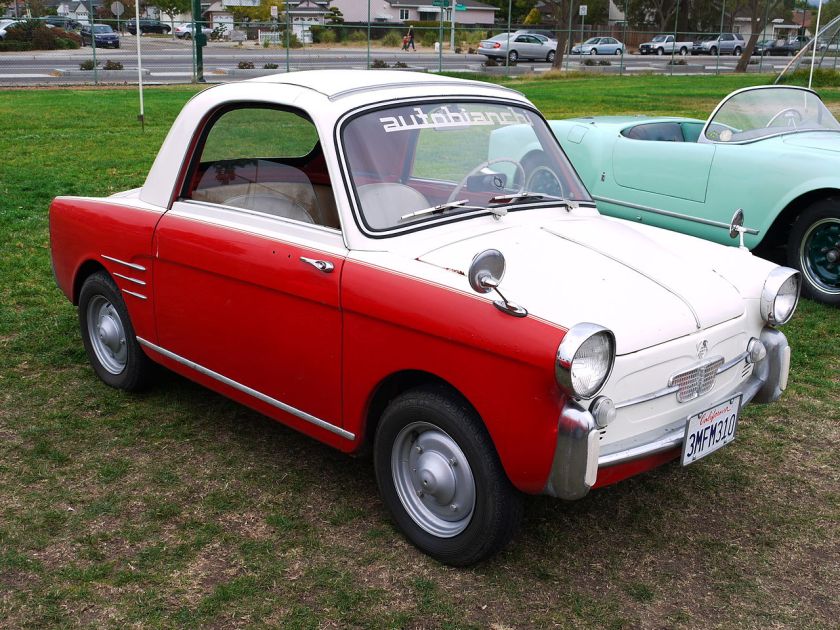 Autobianchi Bianchina Trasformabile
Autobianchi Bianchina Trasformabile
- Autobianchi Bianchina (based on the 500)
- Fiat 126 (replacement for the Fiat 600)
- Fiat 500 “Topolino” (the “original” 500)
- Fiat 600 (the model above 500, slightly larger in size and engine displacement
- Fiat Cinquecento (“five hundred” in Italian).
- Puch 500 (the Austrian version)
- 1948 Fiat 1100 S Coupé
- 1948 Fiat 500
1949 Fiat 1500
- Fiat 1500 (1935), the 1935 model
- Fiat 1300/1500, the 1961 model
1950 Fiat 1400/1900(1952)
| Fiat 1400/1900 | |
|---|---|
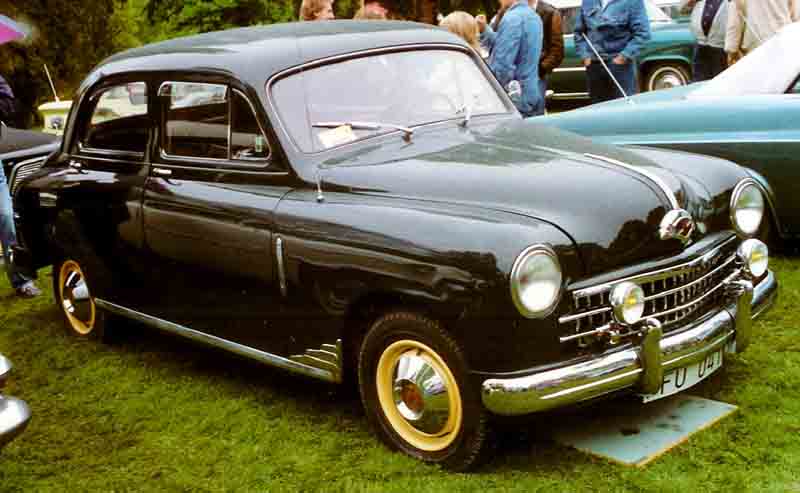
Fiat 1400 Berlina 1951
|
|
| Overview | |
| Manufacturer | Fiat |
| Also called | Zastava 1400 BJ |
| Production | 1950-1958 |
| Designer | Dante Giacosa |
| Body and chassis | |
| Body style | 4-door sedan 2-door cabriolet (1400) 2-door coupé (1900) |
| Layout | FR layout |
| Related | SEAT 1400 & Zastava 1400 BJ |
| Powertrain | |
| Engine | straight-4 |
| Transmission | 4 and 5-speed manual |
| Dimensions | |
| Wheelbase | 265 cm (104.3 in) |
| Length | 424 cm (166.9 in) |
| Width | 166 cm (65.4 in) |
| Height | 153 cm (60.2 in) |
| Curb weight | 1,150 kg (2,540 lb)-1,250 kg (2,760 lb) |
| Chronology | |
| Predecessor | Fiat 1500 |
| Successor | Fiat 1800/2100 |
The Fiat 1400 is a model of car produced by Italian automotive manufacturer Fiat between 1950 and 1958. The car was introduced at the 1950 Geneva Motor Show. It was the first chassisless Fiat automobile. In 1953 the introduction of a diesel version with a 1900 cc engine marked another Fiat first, although the diesel version was known as the 1400 Diesel.
Also in 1953 the Fiat 1400 became the first model to be produced by SEAT in Spain and the first model of passenger car produced by Crvena zastava in FNRY.
The Fiat 1900, introduced in 1952, was an upmarket model that used the same body as the 1400, but came with a 1.9 litre engine and more standard features. The petrol-engined Fiat 1900 A, introduced in 1954, now offered a claimed 70 bhp. It also featured a hydraulically operated clutch and, unusually for that time, a five speed column shifted manual transmission.
Features
- The engine had a 1,4 ltr capacity and a power output of 44 hp (33 kW) with 4400 rpm.
- The larger engine offered from 1952 had a 1,9 ltr capacity and a power output of 70 hp (52 kW) with 4400 rpm.
- It had a maximum speed of 120 km/h (75 mph) (1400 cc version).
- Unloaded weight of 1,120 kg (2,469 lb).
- Hand brake handle under instrument panel,
- Retaining loops for front seat passengers at the roof and at the backrests,
- Armrests in the doors
- Fuel filler access was through a trap door in the floor of the trunk/boot, thus keeping the fuel safe once the car was closed and locked
- The 1900 came standard with a radio and a rudimental “trip computer” that showed the average speed.
About 179.000 1400s and 19.000 1900s were built.
A 1400 cc model tested by the British magazine The Motor in 1950 had a top speed of 74.4 mph (119.7 km/h) and could accelerate from 0-60 mph (97 km/h) in 35.7 seconds. A fuel consumption of 24.2 miles per imperial gallon (11.7 L/100 km; 20.2 mpg-US) was recorded. The car was never sold in the UK, but the Italian market price would have equated to approximately £750 including taxes. Having eulogised the performance and “quite exceptional…top gear flexibility”, British journalists went on to praise the “astonishing silence, smoothness and comfort provided by the vehicle”, highlighting various “unique features designed to prevent the transmission of noise and vibration to the passengers”. Great use was made of rubber and of “a sound-proofing compound…liberally coated…[on the car’s]…integral structure”.
The Motor tested a 1901 cc diesel model in 1954 and recorded a top speed of 63.8 mph (102.7 km/h), acceleration from 0-60 mph (97 km/h) in 45.2 seconds and a fuel consumption of 33.9 miles per imperial gallon (8.3 L/100 km; 28.2 mpg-US). The car was not at the time available on the UK market but a price in Italy of 1,545,000 Lire was quoted which they worked out as equivalent to £909.
Models
| Model | Engine | Displacement | Power | Fuel system |
|---|---|---|---|---|
| 1400 | straight-4 ohv | 1395 cc | 44-56 hp | single carburetor |
| 1400 D | straight-4 ohv | 1901 cc | 40 hp | diesel |
| 1900 | straight-4 ohv | 1901 cc | 60-80 hp | single carburetor |
- 1949 Fiat 1500E
- 1950 Fiat 1400
- 1952 Fiat 1900
- 1952 Fiat 8V Coupé
1952 Fiat 8V
| Fiat 8V | |
|---|---|
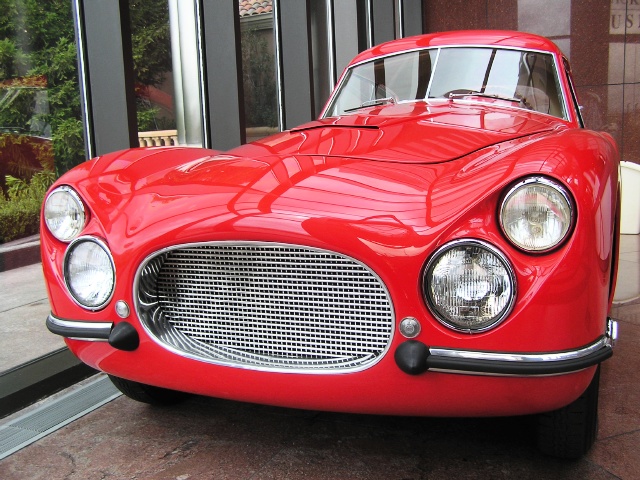
1955 Fiat 8V Berlinetta Coupe, 1 of 3 built by Fiat
|
|
| Overview | |
| Manufacturer | Fiat |
| Production | 1952-1954 |
| Designer | Dante Giacosa Luigi Rapi |
| Body and chassis | |
| Class | Sports car |
| Body style | 2-door coupe |
| Layout | FR layout |
| Powertrain | |
| Engine | V8 1996 cc |
| Transmission | 4 and 5-speed manual |
| Dimensions | |
| Wheelbase | 2,400 mm (94.5 in) |
| Length | 4,060 mm (159.8 in) |
| Width | 1,500 mm (59.1 in) |
| Height | 1,260 mm (49.6 in) |
| Curb weight | 1,000 kg (2,200 lb) |
| Chronology | |
| Successor | Fiat 850 |
The Fiat 8V (or “Otto Vu”) is a sports car produced by the Italian automaker Fiat from 1952 to 1954. The car was introduced at the 1952 Geneva Motor Show. The Fiat 8V got its name because at the time of its making Ford had a copyright on the term V8. They weren’t a commercial success, but did well in racing. Apart from the differential the car did not share any parts with the other Fiats (but many parts were made by Siata and they used them for their cars). The 8V was developed by Dante Giacosa and the stylist Luigi Rapi. The engine was a V8 originally designed for a luxury sedan, but that project was stopped. The Fiat V8 had a 70 degree V configuration of up to a 1996 cc of volume, at 5600 rpm the engine produced 105 hp (78 kW) in standard form giving a top speed of 190 km/h (118 mph). The engine was connected to a four speed gearbox. The car had independent suspension all round and drum brakes on all four wheels.
Top management were preoccupied with more run of the mill projects, however, and only 114 of the high-performance coupés had been produced by the time the cars were withdrawn from production in 1954. Nevertheless, they continued to win the Italian 2-litre GT championship every year until 1959.
34 of the cars had a factory produced bodywork by the Reparto Carrozzerie Speciali (“Special Bodies Department”). Some cars had the bodywork done by other Italian coachbuilders. Carozzeria Zagato made 30 that they labelled “Elaborata Zagato”. Ghia and Vignale also made bodyworks. Most were coupés, but some spyders were made as well. A one-off fiberglass-bodied example currently resides in the Centro Storico Fiat.
Ghia Supersonic
Ghia designed and produced a limited run of cars named ‘Supersonic’, with special ‘jet age’ bodywork. Ghia had recently been sold by Boano to Luigi Segre, and a one-off car had been built for a wealthy entrant in the Mille Miglia race. The car was displayed at the 1953 Turin show and the reaction inspired Segre to plan a limited production of cars based on the Otto Vu, aimed at the American market. Only eight were completed, after mechanical issues ended the project. Several of the cars were purchased by Americans; some were heavily customized and received engine transplants. An original un-restored car sold at a Scottsdale, Arizona Gooding and Company auction in January 2011 with a gavel price of US $1.55 million ($1.7M including buyer’s premium). Ghia would later use its basic body shape on Jaguar XK-120–based vehicles as well as Aston Martin.
-
Fiat 8V Coupe by Ghia
-
Fiat 8V Demon Rouge 1952 designed by Michelotti at Vignale (three made)
-
Fiat 8V Elaborata Zagato
-
Fiat 8V Otto Vu Vignale Coupé (one off)
- 1953 Fiat 1100
- 1954 Fiat 1900 Diesel
- 1955 Fiat 1100 TV Spider
- 1955 Fiat 600
1955 Fiat 600
| FIAT 600 | |
|---|---|
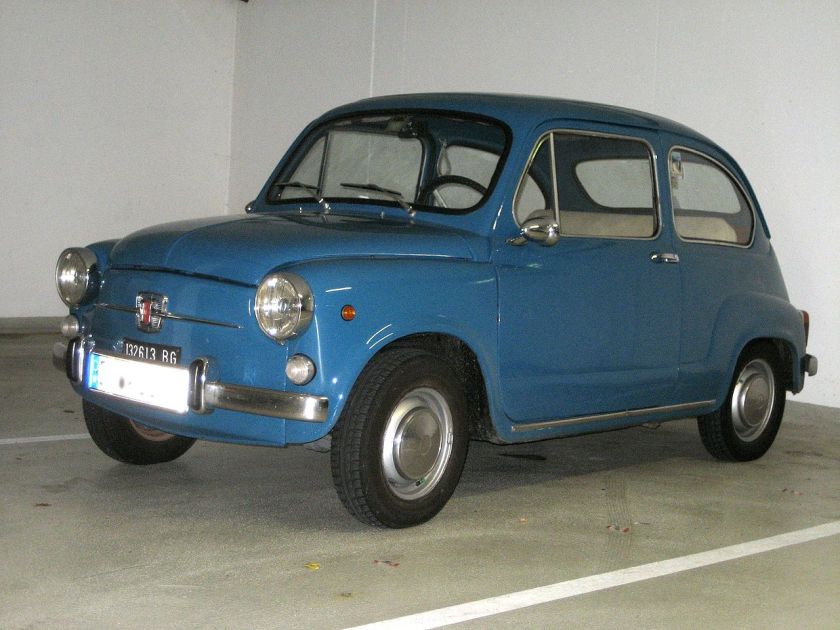 |
|
| Overview | |
| Manufacturer | FIAT |
| Also called | Fiat 77 |
| Production | 1955–1969 |
| Assembly | Turin, Italy Caseros, Buenos Aires, Argentina Rancagua, Chile Bogotá, Colombia Barcelona (Zona Franca), Spain Kragujevac, Serbia, Yugoslavia (as the Zastava 750) Australia |
| Designer | Dante Giacosa |
| Body and chassis | |
| Class | City car |
| Body style | 2-door sedan |
| Layout | RR layout |
| Related | SEAT 600 Zastava 750 |
| Powertrain | |
| Engine | 633 cc OHV I4 767 cc OHV I4 843 cc 100 R7.038 OHV I4 (600S) |
| Dimensions | |
| Length | 3,215 mm (126.6 in) |
| Width | 1,380 mm (54 in) |
| Height | 1,405 mm (55.3 in) |
| Curb weight | 585 kg (1,290 lb) |
| Chronology | |
| Predecessor | FIAT 500 “Topolino” |
| Successor | FIAT 850 |
The FIAT 600 (Italian: Seicento, pronounced say-chento) is a city car produced by the Italian manufacturer FIAT from 1955 to 1969. Measuring only 3.22 m (10 ft 7 in) long, it was the first rear-engined Fiat and cost the equivalent of about € 6,700 or US$ 7,300 in today’s money (590,000 lire then). The total number produced from 1955 to 1969 at the Mirafiori plant in Turin was 2,695,197. During the 1960s, ’70s and ’80s, the car became very popular in countries such as Spain (as SEAT 600), where it became the icon, par excellence, of the Spanish miracle, Argentina, where it was nicknamed Fitito (a diminutive of FIAT) and former Yugoslavia where it was nicknamed Fićo (pronounced [fee-cho]).
Characteristics
The car had hydraulic drum brakes on all four wheels. Suspension was a unique single double-mounted leafspring – which acts as a stabilizer – between the front wheels coupled to gas-charged shock absorbers, and an independent coil-over-shock absorber setup coupled to semi-trailing arms at the rear. All 600 models had 3-synchro (no synchro on 1st) 4-speed transaxles. Unlike the Volkswagen Beetle or Fiat 500, the Fiat 600 is water-cooled with an ample cabin heater and, while cooling is generally adequate, for high-power modified versions a front-mounted radiator or oil cooler is needed to complement the rear-mounted radiator. All models of the 600 had generators with mechanical external regulators.
The top speed ranged from 95 km/h (59 mph) empty with the 633 cc inline-four engine to 110 km/h (68 mph) with the 767 cc version. The car had good ventilation and defrosting systems.
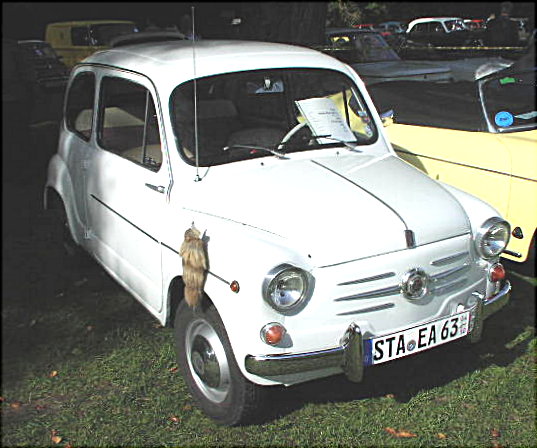
Steyr Fiat 600
A year after its debut, in 1956, a soft-top version was introduced, as well as a six-seater variant — the Fiat 600 Multipla. It was a precursor of current multi-purpose vehicles.
Retrospectively the water-cooled Fiat 600 is sometimes over-shadowed by the air-cooled Fiat 500, but the 600 was a remarkably fast seller in its time: the millionth 600 was produced in February 1961, less than six years after the car’s launch. At the time when the millionth car was produced, the manufacturer reported it was producing the car at the then remarkable rate of 1,000 a day. As of 2011 there are only 65 left in the UK that are road legal.
Derivatives
SEAT 600/800
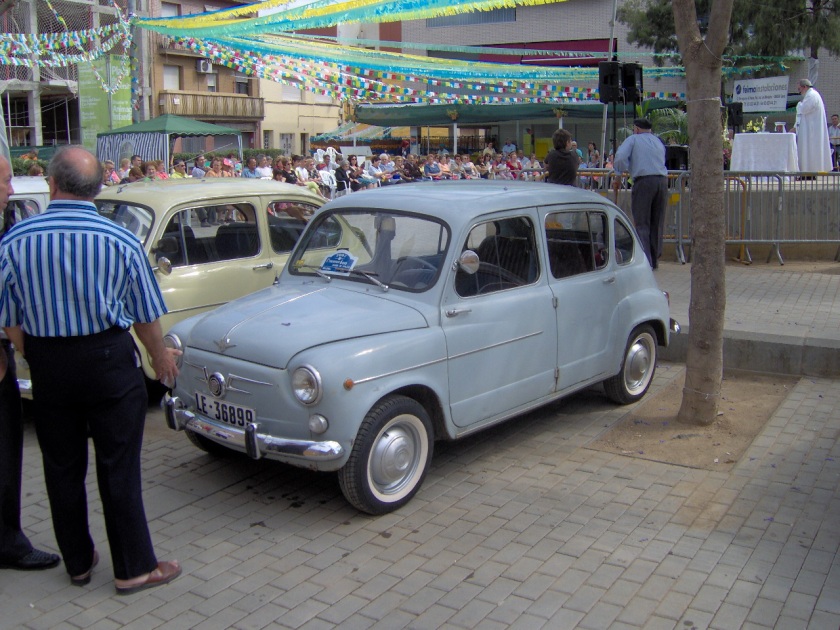
SEAT 800, the sole four-door derivative
In Spain, the 600 model was made under the make of SEAT, from 1957 to 1973. Up to 797.319 SEAT 600 were made. The Spanish car maker exported them to a number of countries worldwide. This car motorised Spain after the Spanish Civil War.
SEAT produced various derivatives of the original 600 model some of them with improvements and special fittings like the use of “suicide doors”: the SEAT 600 D/E/L Especial version, the ‘Descapotable’ convertible and the ‘Formicheta’ commercial version etc.
The most interesting version produced between 1964 and 1967 by SEAT is though the SEAT 800, the sole four-door derivative of the 600 model which received a longer wheelbase. It was developed in-house by SEAT and produced exclusively by the Spanish car maker without any equivalent model in Fiat’s range.
Fiat 600/770 Neckar Jagst
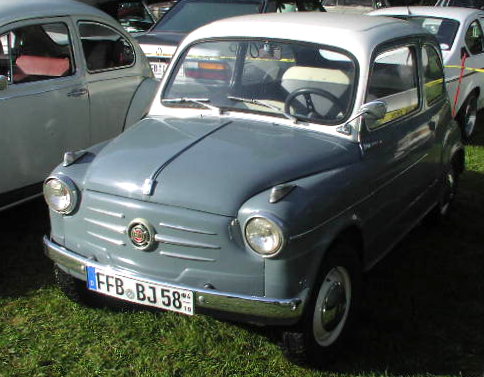
NSU Fiat Jagst
The Fiat 600 was also manufactured at Fiat Neckar in Germany between 1956 and 1967. Presented in a first time as Jagst 600, in 1960 with the release of Fiat 600D it became Jagst 770. The model was manufactured until the end of 1967, more than 172,000 copies.
Zastava 750/850
In former Yugoslavia the model was very popular, and was produced under the name Zastava 750 (later 850), nicknamed “Fića” in Serbian, “Fićo” in Bosnian and Croatian, “Fičo” in Slovene, and “Фиќо/Фичо” (Fikjo/Ficho) in Macedonian. It was produced by the Zastava factory in Kragujevac, Serbia, from the early 1960s until 1985, during which time it played a major role in motorisation of the country, due to its affordability.
South American production
The 600 was built as the Fiat 600 R by Sevel in Argentina from 1960 to 1982, with assembly operations also taking place (beginning somewhat later) in Uruguay by Ayax S.A., and in Chile. At first, Someca S.A. built the 600 with rear-hinged doors and the 633 cc engine (28 hp), mainly from parts shipped in from Italy. As a new plant was constructed in the Ferreyra, a suburb of Córdoba, the local parts content steadily increased. In 1962 the 600D was introduced, with a 32 hp (SAE) 767 cc engine. In August 1964, around the same time that the local firm changed its name to Fiat Concord S.A., the second 600D was introduced, with slight changes to its appearance. The suicide doors continued to be used until the April 1965 appearance of the 600E, which also gained some extra power. Early in 1967 the 600E received a slight facelift with bigger headlights, new rims, and a new “grille” in front.
In November 1970 the 600R appeared. The external differences were limited to trim, but the interior saw more thorough changes, with a new steering wheel, inner ceiling, and seat coverings. The hubcaps were replaced with tiny rubber caps. The 767 cc 36 hp (SAE) 600 R (thanks to higher compression than the E) was in turn replaced by the 32 hp (DIN) 843 cc (65.0 x 63.5 mm) 600 S in July 1977, a version featuring new bumpers with rubber overriders and a black plastic faux-grille to replace the previous chrome iteration. Top speed was up from 105 to 110 km/h (68 mph). The 600 was finally replaced by the new 147 in April 1982, after having undergone one last tiny facelift in 1981 (black head and taillight surrounds, a black “shield” up front).
In Colombia, it was assembled in the actual motor plant of Mazda in Colombia, Compañía Colombiana Automotriz from 1979 to 1982 with 60% Colombian parts and 40% Serbian parts (from the Zastava 750). Marketed as the Fiat 750Z, colloquially it was called the “topolino”.
600 Multipla (1956–1965)
| FIAT 600 Multipla | |
|---|---|
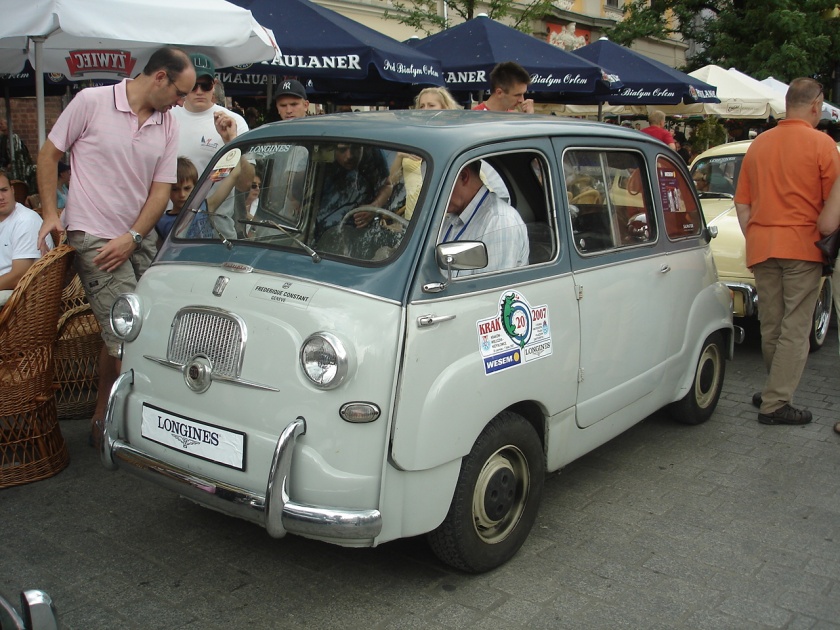 |
|
| Overview | |
| Manufacturer | FIAT |
| Production | 1956-1969 243,000 units |
| Body and chassis | |
| Class | Mini MPV |
| Layout | RR layout |
| Powertrain | |
| Engine | |
| Transmission | 4-speed manual |
| Dimensions | |
| Wheelbase | 2,000 mm (78.7 in) |
| Length | 3,531 mm (139.0 in) |
| Width | 1,448 mm (57.0 in) |
| Height | 1,581 mm (62.2 in) |
| Curb weight | 700 kg (1,543 lb) |
The original FIAT 600 Multipla was based on the Fiat 600’s drivetrain, model 1100 coil and wishbone independent front suspension, and sat six people in a footprint just 50 centimetres (19.7 in) longer than the original Mini Cooper. The driver’s compartment was moved forward over the front axle, effectively eliminating the boot but giving the body a very minivan-like “one-box” look. Behind the front seat the vehicle could be arranged with a flat floor area or a choice of one or two bench seats.
Until the 1970s, it was widely used as a taxi in many parts of Italy.
A 633 cc, RHD Multipla, was tested by the British magazine The Motor in 1956 and was found to have a top speed of 57.1 mph (91.9 km/h) and could accelerate from 0-50 mph (80 km/h) in 43.0 seconds. A fuel consumption of 38.4 miles per imperial gallon (7.36 L/100 km; 32.0 mpg-US) was recorded. The test car cost £799 including taxes on the UK market.
In 1956, Fissore designed a remarkable open-topped Multipla prototype called the “Marinella” with a wooden-slat wraparound bench in the rear. A Fiat 600 Multipla towing a caravan is used in the video clip of the Crowded House hit Weather with You from their 1991 album Woodface.
The Multipla name was re-introduced in the late-1990s, for the Fiat Multipla compact MPV.
600T
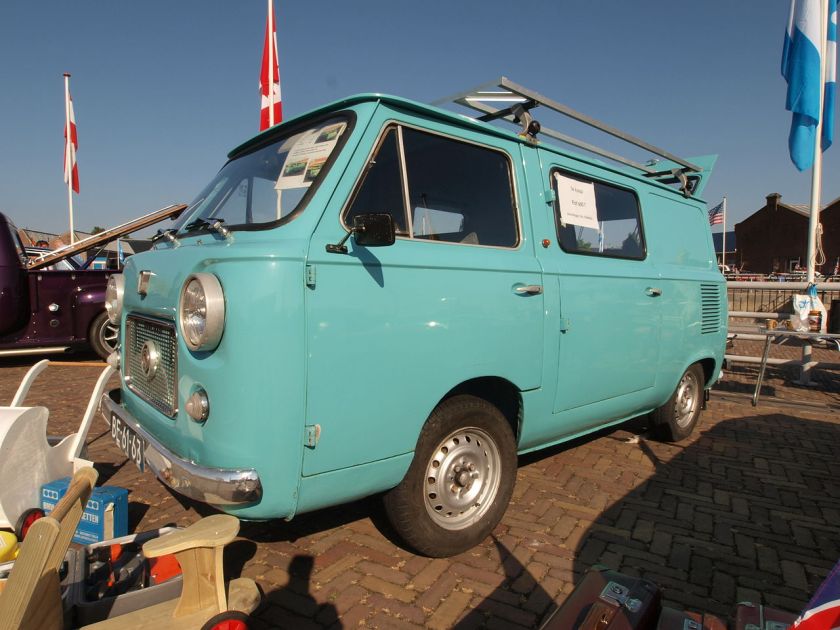
Fiat 600T, a van variant of Fiat 600 and a predecessor of the Fiat 850T
The Fiat 600T is a van derivative of the 600 Multipla. It is powered by a rear mounted 633 cc 4 cylinder engine.
Jolly
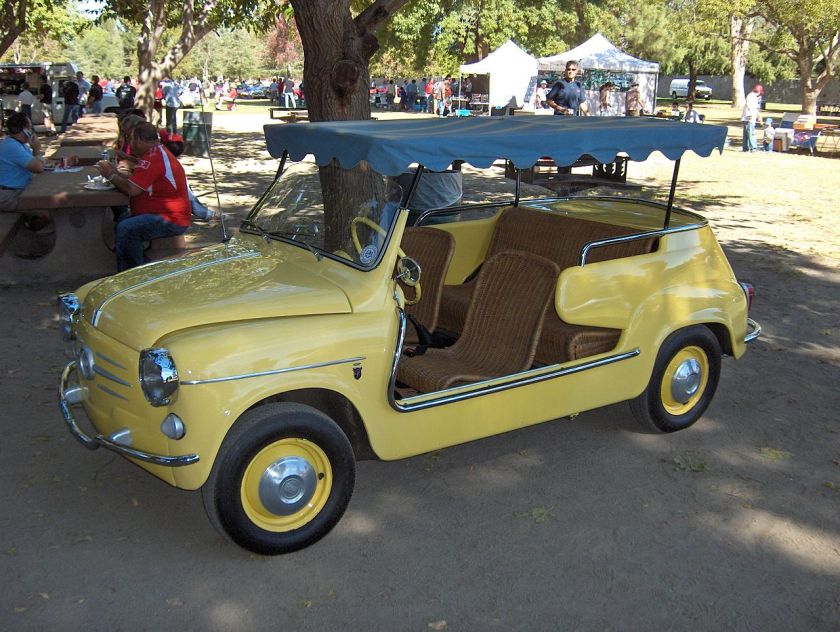
The Fiat 600 “Jolly” – with wicker seats
In 1958 Fiat shipped a number of Fiat 600s to the Italian design house Ghia for conversion into the Jolly. Featuring wicker seats and the option of a fringed top to shield its occupants from the Mediterranean sun, these cars were originally made for use on large yachts of the wealthy (Aristotle Onassis owned one).
The car was designed as a luxury vehicle for wealthy Europeans and the US market.
With a cost of nearly double that of a standard “600”, they were made in a very limited production. It is believed that fewer than 100 exist today. 32 Jolly cars were used as taxis on the island of Catalina off the coast of Los Angeles in the USA in the years 1958–1962.
Abarth versions
Italian tuning company Abarth produced various versions of the Fiat 600 from 1956 to 1970 under a variety of model names, including Abarth 210 A, Fiat-Abarth 750, 850, and 1000. Many suffixes like Granturismo, Berlina, TC, and TCR were also used and many were built with aluminium bodywork by Zagato and other famed Italian carrozzerie.
- 1955 Fiat 600 Multipla
- 1956 Fiat 600D Multipla
- 1957 Fiat 1200 Spyder
1957 Fiat 1200
| Fiat 1200 | |
|---|---|
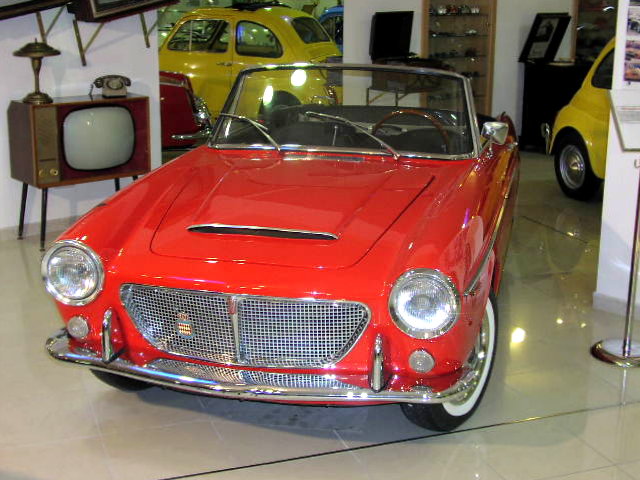
1959-1963 Fiat 1200 Cabriolet
|
|
| Overview | |
| Manufacturer | Fiat |
| Production | 1957–1963 |
| Designer | Luigi Rapi (Trasformabile) Pininfarina Coupé and Cabrio |
| Body and chassis | |
| Body style | 4-door sedan 2-door coupé 2-door convertible |
| Powertrain | |
| Engine | 1,221 cc I4 |
| Dimensions | |
| Wheelbase | 2,425 mm (95.5 in) |
| Length | 3,921 mm (154.4 in) |
| Width | 1,460 mm (57 in) |
| Height | 1,492 mm (58.7 in) |
| Curb weight | 880 kg (1,940 lb) |
| Chronology | |
| Predecessor | Fiat 1100 |
| Successor | Fiat 1300/1500 |
The Fiat 1200 was introduced in Turin Motor Show in November 1957 and is prized by collectors for its cuteness. The 1200 Fiat or Granluce Fiat 1200, was intended to replace the Fiat 1100-103 TV – Turismo Veloce. The 1200 was equipped with a new engine of 1,221 cc, developing 55 PS (40 kW). The 1200 saloon/berlina was based on the Fiat 1100 which visually it closely resembled.
Based around this engine, Fiat introduced at the same time the cabriolet version called “Trasformabile”, the natural successor to the Fiat 1100-103 Trasformabile.
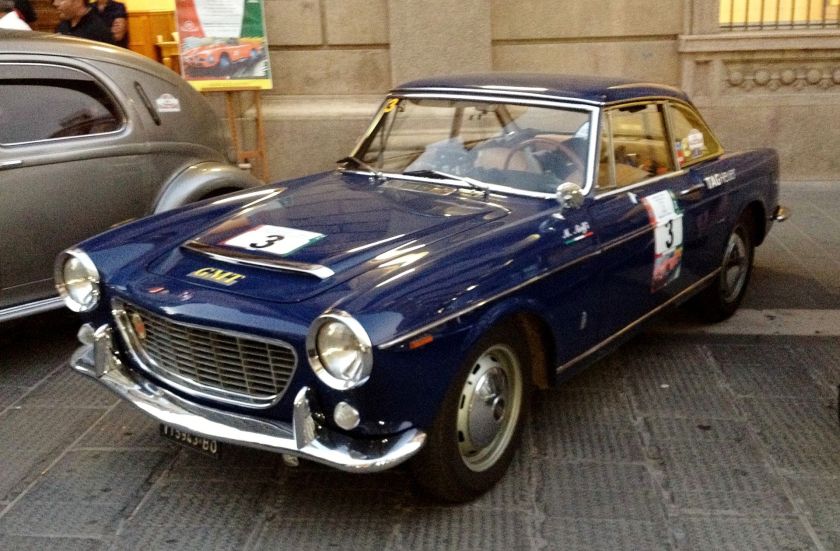
Fiat 1500 S Coupé, with the O.S.C.A. twin cam engine
The 1200 Trasformabile was replaced in 1959 by the Pininfarina designed Fiat 1200 Cabriolet. In November 1959, this also became available with an O.S.C.A. built twin cam engine of 1,491 cc, developing 80 PS (59 kW). This model is called the Fiat 1500 S Cabriolet. In 1962 this engine was replaced with an O.S.C.A. 1,568 cc twin cam four with 90 PS (66 kW) (100 hp gross). This body continued to be built as the 1200 was replaced by the 1300 and 1500, albeit with a modified front end.
The 1200 Granluce was cancelled in September 1961, when the new and more modern 1300 took its place.
Approximately 400,000 copies of the Fiat 1200 were built until 1960, when Fiat presented the 1100 and Special Export.
1959 Fiat 1800/2100
| Fiat 1800/2100/1500L | |
|---|---|
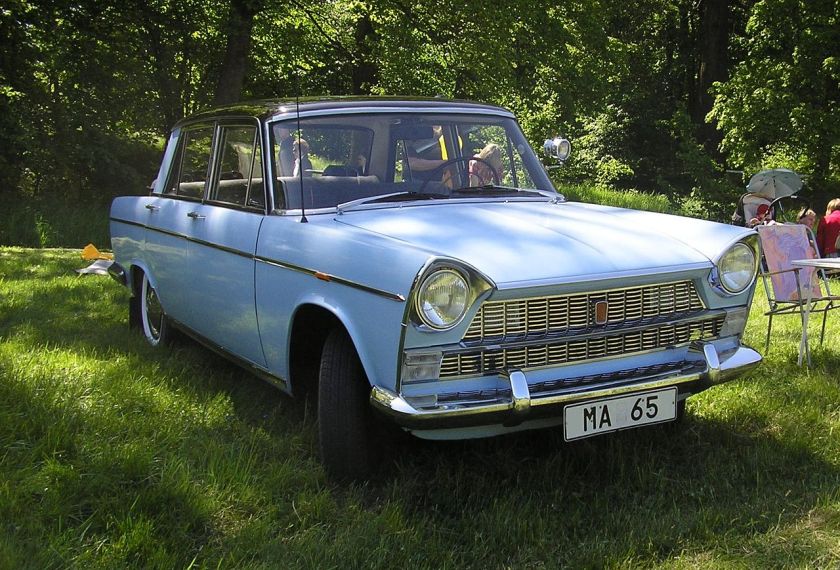
Fiat 2100 Berlina 1959
|
|
| Overview | |
| Manufacturer | Fiat |
| Production | 1959-1968 |
| Designer | Dante Giacosa |
| Body and chassis | |
| Body style | 4-door sedan 5-door station wagon |
| Layout | FR layout |
| Related | Fiat 2300 SEAT 1500 |
| Powertrain | |
| Engine | straight-6 1795 cc (1959 – 1968) 2054 cc (1959 – 1968) straight-4 1481 cc (1963 – 1968) |
| Dimensions | |
| Wheelbase | 265 cm (104.3 in) 273 cm (107.5 in) (Speciale) |
| Length | 446.5 cm (175.8 in) 475 cm (187.0 in) (Speciale) 462 cm (181.9 in) (Coupé) |
| Width | 162 cm (63.8 in) |
| Height | 147 cm (57.9 in) 138 cm (54.3 in) (Coupé) |
| Curb weight | 1,250 kg (2,760 lb)-1,350 kg (2,980 lb) |
| Chronology | |
| Predecessor | Fiat 1900 |
| Successor | Fiat 2300 |
The Fiat 1800 and 2100 are six-cylinder saloons produced by Italian automotive manufacturer Fiat between 1959 and 1968. Both six-cylinder models appeared in 1959: in 1963, a four-cylinder 1500 cc version was added to the range. The styling closely resembled that of the Alfa Romeo 2000, Peugeot 404 and BMC‘s family cars of the same period. The Alfa was designed by Carrozzeria Touring of Milan, while Both the Peugeot and the Austin were designed by Pininfarina of Turin. The 1800/2100 were designed by Fiat’s own Dante Giacosa.
1800 (1959-68)
The Fiat 1800 appeared in 1959, offered as a 4-door sedan and a 5-door Familiare (Station Wagon ). The 1800 model had a 6-cylinder in-line engine with 1795 cc and a power output of 75 hp / 55 kW delivered through a 4-speed transmission. Its maximum speed was, depending on the version, 137 km/h (85 mph) – 142 km/h (88 mph). This was replaced in 1961 with the 1800 model B: the engine output was now 81 hp / 60 kW and top speed between 143 km/h (89 mph) – 146 km/h (91 mph).
2100 (1959-61)
The 2100 was a version with a bigger six-cylinder engine. In autumn 1959, the 2100 Speciale was introduced with a lengthened wheelbase and different front grille. The Speciale was used by diplomats. The 2100 was discontinued in Italy during 1961, when the Fiat 2300 became available.
1500L (1963-68)
Fiat used the body of Fiat 1800/2100 to create a new less expensive model, the Fiat 1500L introduced in 1963. To distinguish it from the 1300/1500 its name used the designation 1500L (lunga = long). The car shared with its more compact sibling Fiat’s four-cylinder 1481 cc engine, delivering 72 bhp, which, in 1964, was increased in the second series to 75 bhp. A reduced-performance version was also offered, aimed at taxi drivers. This proved popular in southern Europe, equipped with a straight-4 1481 cc petrol engine developing just 60 bhp: the low power engine permitted the transport of customers in comfort and space at urban speeds, without consuming too much fuel.
This version was made also by SEAT in Spain, where no other petrol version of the Fiat 1800/2100 was ever produced. It was badged simply as SEAT 1500, since no equivalent of the Fiat 1500 was produced by SEAT. Nearly 200,000 Seat 1500s were built until 1972.
It is estimated that total production in Italy of the Fiat 1800/2100 range is 150,000.
Engines
| Model | Years | Engine | Displacement | Power | Fuel system |
|---|---|---|---|---|---|
| 1800 | 1959-61 | straight-6 ohv | 1795 cc | 75 hp | single carburetor |
| 1800B | 1962-68 | straight-6 ohv | 1795 cc | 86 hp | single carburetor |
| 2100 | 1959-61 | straight-6 ohv | 2054 cc | 82 hp | single carburetor |
| 1500L | 1963-67 | straight-4 ohv | 1481 cc | 75 hp | single carburetor |
- 1959 Fiat 2100
- 1959 Fiat 2100 Coupé Vignale
- 1959 Fiat 750 Berlina Abarth
- 1959 Fiat Nuova 500 Sport
- 1960 Fiat 1500 Cabriolet
- 1960 Fiat 500 Giardiniera
- 1961 Fiat 2300 Berlina
1961 Fiat 2300
| Fiat 2300 | |
|---|---|
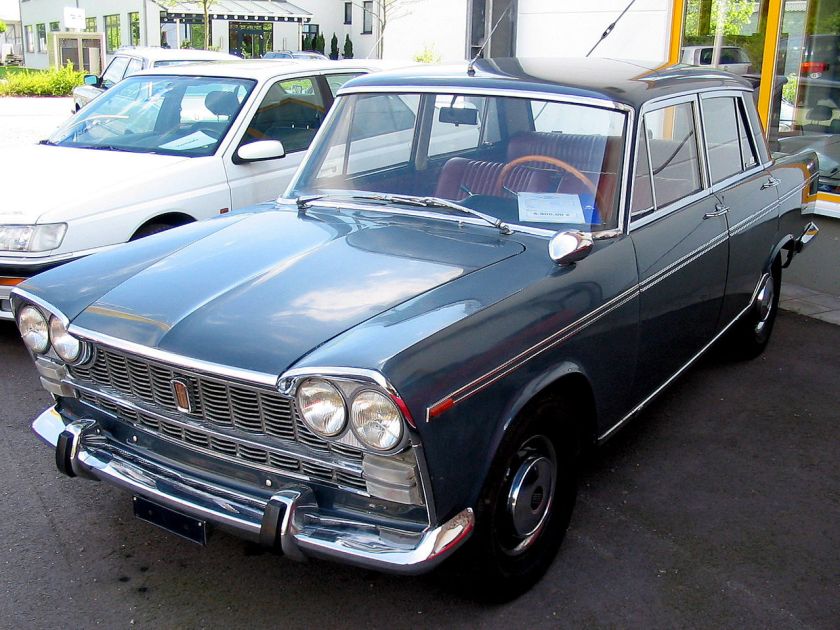 |
|
| Overview | |
| Manufacturer | Fiat |
| Production | 1961-1969 |
| Designer | Saloon Pininfarina Coupe Sergio Sartorelli at Ghia |
| Body and chassis | |
| Class | Large family car |
| Body style | 4-door saloon 2-door coupé 5-door station wagon |
| Layout | FR layout |
| Related | Fiat 1800/2100 |
| Powertrain | |
| Engine | straight-6 |
| Transmission | 4 speed manual all-synchromesh : overdrive optional automatic Borg Warner 3 speed with torque converter |
| Dimensions | |
| Wheelbase | 2,650 mm (104.3 in) Speciale: 2,730 mm (107.5 in) |
| Length | 4,485 mm (176.6 in) |
| Width | 1,620 mm (63.8 in) |
| Height | 1,470 mm (57.9 in) |
| Curb weight | 1,285 kg (2,833 lb)-1,345 kg (2,965 lb) |
| Chronology | |
| Predecessor | Fiat 2100 |
| Successor | Fiat 130 |
The Fiat 2300 is an automobile which was produced by Italian automotive manufacturer Fiat between 1961 and 1969.
Mechanically the 2300 lived up to its expectations with power assisted brake discs for all four wheels and a powerful 2.3 litre six cylinder engine (with twin-carbs on the “S” version). Production continued in limited numbers until 1968.
The 2300 saloon (styled by Dante Giacosa) is noteworthy as the first Fiat model to become available with a fully automatic gearbox, which replaced the Saxomat clutch as an optional extra in 1966. Most 2300s and all 2300S coupés had a four-speed all-synchromesh gearbox. In July 1967 the UK´s Motoring & Driving Register cross-compared the car with the outgoing Humber Super Snipe saloon. The Fiat was capable of “assured high-speed motoring above 110 mph though the compromise is a somewhat less pliant suspension”.
Coupé
One of less well known “niche” Fiat models of the 1960s was the 2300/2300S Coupé. The shape of the car was first seen in public when Ghia presented it as a prototype sports coupé at the 1960 Turin Motor Show. A production version, based on the newly launched Fiat 2300 sedan was first seen in 1961 and went on general sale in 1962. Having developed the coupé body, Ghia lacked the production capacity needed for the volumes envisaged, and were obliged to subcontract its production to OSI.
The coupé body was welded to the standard floor platform of the 2300 saloon with which it shared its core components. (Despite being a new model, the 2300 saloon was in most respects a well-proven design, being a larger engined version of the Fiat 2100 that had been available since 1959.) The wheelbase was identical, but the coupé had a slightly wider track at both ends than the saloon, and final drive gearing for the coupé was increased to 3.9 (3.72 for the 2300S coupé) which translated to 20.9 mph (33.6 km/h) per 1,000 rpm.
Elegantly styled by Ghia the 2300 had true “Grand Touring” style and panache which often earned it the “poor man’s Ferrari” tag. Inside the 2300 Coupe featured power operated windows and other luxury fittings.
Specifications
| Model | Years | Engine | Displacement | Power | Fuel system |
|---|---|---|---|---|---|
| 2300 | 1962-68 | straight-6 ohv | 2279 cc | 105 hp | Double carburetor |
| 2300 S | 1962-68 | straight-6 ohv | 2279 cc | 136 hp | Double carburetor |
-
Fiat 2300 Estate in UK (1967)
-
Fiat 2300 S Coupe
-
Fiat 2300 S Coupe 2. Series
-
Ghia-Fiat G230S based on Fiat 2300 S
- 1961 Fiat 2300 Coupé
- 1961 Fiat 2300S Coupé
- 1961 Fiat 850 TC Berlina Abarth
1961 Fiat 850
| Fiat 850 | |
|---|---|
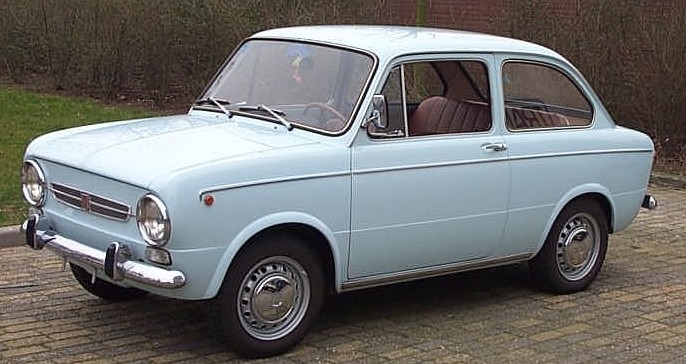
1968 Fiat 850 Special
|
|
| Overview | |
| Manufacturer | Fiat |
| Production | 1964–1973 |
| Designer | Dante Giacosa |
| Body and chassis | |
| Body style | 2 door coupé 2 door saloon (Berlina) 2 door roadster (Spider) 2 door station wagon (Familiare) 2 door van (Furgonata) |
| Layout | RR layout |
| Related | SEAT 850 SEAT/Fiat 133 Siata Spring |
| Powertrain | |
| Engine | 817 cc I4 (US only) 843 cc I4 903 cc I4 |
| Transmission | 4-speed manual |
| Dimensions | |
| Wheelbase | 2,025 mm (79.7 in) |
| Length | 3,575 mm (140.7 in) (saloon) 3,735 mm (147.0 in) (familiare) |
| Width | 1,385 mm (54.5 in) (saloon) 1,500 mm (59.1 in) (familiare) |
| Height | 1,385 mm (54.5 in) (saloon) 1,655 mm (65.2 in) (familiare) |
| Chronology | |
| Predecessor | Fiat 600 |
| Successor | Fiat 127 Fiat 133 Fiat X1/9 (Spider) Fiat 900T (Familiare) |
The Fiat 850 is a small longitudinal–rear-engined rear-wheel drive car which was produced by Fiat of Italy between 1964 and 1973.
Overview
Its technical design was an evolution of the very successful Fiat 600. The internal name for the Fiat 600 development project was “Project 100” and consequently, the internal Fiat codename for the 850 project was 100G (G was a follow on of model designations for the 600 which ran from A to F). The engine of the 850 was based on that of the Fiat 600, but had its capacity increased to 843 cc. The 850 came in two versions: “normale” (standard) with 34 hp (25 kW) and “super” with 37 hp (28 kW). The maximum speed was approximately 125 km/h (78 mph). While it was not a large step forward in technical development, it possessed a certain charm with its large rolling eyes and its short tail, in which the engine sat.
Variants
The 850 family included several body styles with similar technical components underneath.
- Fiat 850 Special — Revised version of the 850 sedan, launched in 1968. It shared the 47 hp (35 kW) engine of 850 Coupé, and offered front disc brakes, sport steering wheel and improved trim. With a 25 percent increase in power, plus disc brakes nestled behind 13″ wheels, it was a “sport sedan” in the vein of the BMW 2002, albeit on a smaller scale.
- Fiat 850 Familiare — The Familiare was a boxier and slightly larger heir to the Fiat 600 Multipla. It featured space for seven passengers in three rows, which made it suitable for groups including children and thin adults. It was too small to accommodate in comfort seven large adults.
- The 850 Familiare continued in production till 1976 long after the saloon version of the 850 had been replaced by the Fiat 127. In 1976 the Fiat 900T was introduced, retaining most of the body panels of the 850 Familiare, but featuring the 903 cc engine from the Fiat 127 (although, in this application, still mounted behind the rear axle): the 900T benefitted from significant enhancements in 1980, being now renamed 900E. At least in the UK the 900 series camper vans were badged as FIAT Amigo. Production finally ended in 1985.
- Fiat 850 Coupé — The Coupé was introduced for the first time 1965 on the Geneva Motor Show and had the original 843 cc engine tuned to produce 47 hp (35 kW). The maximum speed at that time was 135 km/h (84 mph).
- Fiat 850 Spider — At the same time as the Coupé, Fiat also introduced the convertible sporty two-seater Spider, with the original 843 cc engine tuned to produce 49 hp (37 kW) which allowed it to reach a top speed of 145 km/h (90 mph). The body was designed and built by Bertone in its Grugliasco, Turin plant. The folding roof section made of fabric could be stowed away completely under a rear flap. The Bertone design also featured smooth, essential lines and simple yet elegant details, such as the recessed headlamps equipped with tilted plexiglass covers to follow the lines of the wings, and the dihedral side panels inspired by Bertone’s 1963 Corvair Testudo.This engine ran counterclockwise, a unique feature compared to other engines.
At the time of their introduction into the United States the Sedan, Coupé, and Spider were marketed with a reduced capacity, high compression 817 cc (49.8 ci) engine in order to beat US emissions regulations at the time which applied only to engines equal to or larger than 50 cubic inches. Compression was raised from 8.8:1 to 9.2:1, requiring premium octane fuel.
In order to separate the sportier variants Coupé and Spider from the basic version, apart from the increase of engine performance, the equipment was also extended and adapted to the higher expectations. Both received sport seats, a sport steering wheel and round speedometer; Spider even received a completely rearranged instrument panel. The front drum brakes were replaced with disc brakes, although drum brakes remained on the rear wheels.
In 1968, Fiat revised the successful Spider and Coupé again and gave them an even stronger engine with 903 cc and 52 hp (39 kW). They were called Sport Spider and Sport Coupé. The Sport Spider body stayed essentially the same, but with a restyled front. The headlamps were moved forward slightly and the plastic covers were eliminated giving the car a “frogeye” look, and the original flush front turn indicators were replaced with units hung below the bumper. Several limited special edition versions of the Spider were offered, including the Racer featuring a body colored metal hard top and the Racer Berlinetta featuring a black vinyl hard top.
There was a minivan and transporter model as a successor of the world’s first minivan, Fiat 600 Multipla, which was later renamed to 900T and likewise received the larger capacity of 903 cc.
Production of the Coupés ended in 1971, of the sedan in 1972, and of the Spiders in 1973, after altogether nearly 2.3 million models were sold worldwide, 140,000 of which were Spiders. Under the name SEAT 850, it was however further produced for some years in Spain, also in a four-door variant. As a successor the Fiat 127 was brought to the market in 1971 which combined the 903 cc push-rod OHV engine with the FIAT 128 transmission and suspension components in a fashionable fast- and later hatch-back 2-door sedan.
Between 1978 and 1983, the U.S. government issued a highly unusual recall for the Fiat 850—going back 10 years—for rust problems.
In 1967, Road & Track called the Fiat 850 coupe “one of the handsomest, best-balanced designs ever seen on a small car.”
Derivatives
SEAT
Spanish SEAT also built the 850 into the 1970s. They also offered a four-door saloon derivative in two different iterations. The Fiat 850 was also produced under the name Pirin-Fiat in Lovech, Bulgaria, on the basis of complete knock down (CKD) kits between 1967 and 1971.
Abarth
Abarth produced a tuned version of the Spider, known as the Fiat Abarth OT 1000 Spider. With engine displacement increased to 982 cc, it produced 61 hp (45 kW) and 58 lb·ft (79 N·m) of torque. There was also the Michelotti Shellette, a beach car in the mold of Ghia‘s 500 and 600-based “Jolly” cars. It was a more useful proposition, being faster and better equipped. Only about 80 were built, with some of the early ones using DAF underpinnings. The Shellette has the more powerful 47 PS (35 kW) engine of the Special/Coupé.
Abarth also produced the Fiat Abarth OT 2000 Competition Coupé, based on the 850 Coupé but powered by a 1946cc engine. It differed visually from the 850 Coupé in having a barred grill between the headlights and a divided front bumper flanking a spare wheel which projected forward below the grill.
- 1961 Fiat 1300
- 1961 Fiat 1500
- 1962 Fiat 1500S Berlina Abarth
- 1963 Fiat 1600 Cabriolet
- 1963 Fiat 1600S Coupé
- 1963 Fiat 2300 Berlina Speciale
- 1963 Fiat 600
- 1963 Fiat 600 D Multipla
- 1964 Fiat 850
- 1965 Fiat 850 Coupé
- 1965 Fiat 850 Spider
- 1965 Fiat OT 1000 Coupé Abarth
1967-fiat-abarth-1000-ots-1965-1970
This were part II + III
next chapters following with
1966-1979
- 1966 Fiat 124 1200
- 1966 Fiat 124 Coupé 1400
- 1966 Fiat 124
- 1966 Fiat 124 Spider 1400
- 1966 Fiat 2300 B Familiare
- 1966 Fiat 850 Vanessa
- 1966 Fiat OT 1300/124 Coupé Abarth
- 1966 Fiat 1100 R
- 1967 Fiat 125
- 1967 Fiat 125 Special Berlina
- 1967 Fiat 1500 Cabriolet
- 1967 Fiat Dino Coupé 2.0
- 1967 Fiat Dino Spider 2.0
- 1968 Fiat 1500 L Berlina
- 1968 Fiat 850 Sport Coupé
- 1968 Fiat 850 Sport Spider
- 1968 Fiat 850 Super Berlina
- 1969 Fiat 124 Coupé 1600
- 1969 Fiat 124 Spider 1600
- 1969 Fiat 128 Estate
- 1969 Fiat 128 Saloon
- 1969 Fiat 130 Saloon
- 1969 Fiat Dino 2.4 Coupé
- 1969 Fiat Dino 2.4 Spider
- 1970 Fiat 124 Special T
- 1970 Fiat 418 urban bus
- 1971 Fiat 127
- 1971 Fiat 128 1100SL Coupé
- 1971 Fiat 128 1300SL Coupé
- 1971 Fiat 128 Rally
- 1973 Fiat 314/3 urban/intercity bus
- 1971 Fiat 130 Coupé
- 1971 Fiat 130 Coupé Automatic
- 1972 Fiat 124 Abarth Rallye
- 1972 Fiat 124 Coupé 1800
- 1972 Fiat 124 Spider 1800
- 1972 Fiat 127 L
- 1972 Fiat 421 city/urban bus
- 1972 Fiat 500L
- 1972 Fiat 500L Berlina
- 1972 Fiat 850 Familiare
- 1972 Fiat X1/9
- 1973 Fiat 126
- 1973 Fiat 132
- 1974 Fiat 133
- 1975 Fiat 130 Opera
- 1975 Fiat Mirafiori 1600 CL
- 1976 Fiat 131 Abarth
- 1976 Fiat 132 1800 ES
- 1977 Fiat 132 2000 GLS
- 1977 Fiat Fiorino (first generation)
- 1976 Fiat 370.12.26 coach
- 1978 Fiat 128
- 1978 Fiat Ritmo
- 1978 Fiat Mirafiori Sport
- 1979 Fiat 124 Spider 2000
- 1979 Fiat 132 Diesel
- 1979 Fiat Campagnola
- 1979 Fiat Campagnola Lunga
- 1979 Fiat Mirafiori 1300 CL
- 1979 Fiat Supermirafiori
1980-1989
Fiat Cinquecento Sporting
- 1980 Fiat Panda 750
- 1980 Fiat Strada 75 CL
- 1980 Fiat Supermirafiori
- 1980 Fiat 126
- 1981 Fiat 131 Mirafiori 1300 L
- 1981 Fiat 131 Racing
- 1981 Fiat Strada Abarth 125 TC
- 1982 Fiat 127 1300 Sport
- 1982 Fiat Abarth Volumetrico 131
- 1982 Fiat Argenta
- 1982 Fiat Campagnola Diesel
- 1982 Fiat Panda 30
- 1982 Fiat Strada 105 TC
- 1982 Fiat X1/9 (US)
- 1983 Fiat Regata
- 1983 Fiat Uno
- 1984 Fiat Panda 4X4
- 1984 Fiat Strada Abarth 130 TC
- 1984 Fiat Fiorino (second generation)
- 1985 Fiat 127 Diesel Panorama
- 1985 Fiat 127 Panorama
- 1985 Fiat Argenta SX
- 1985 Fiat Panda 45 Super
- 1985 Fiat Uno Turbo ie
- 1986 Fiat Croma
- 1986 Fiat Panda 1300D
- 1987 Fiat 126 BIS
- 1988 Fiat Tipo
- 1989 Fiat Croma Diesel
1990-1999
- 1990 Fiat Tempra
- 1992 Fiat Cinquecento
- 1994 Fiat Punto
- 1994 Fiat Fiorino (third generation)
- 1995 Fiat Barchetta
- 1995 Fiat Brava
- 1995 Fiat Bravo
- 1995 Fiat Cinquecento Sporting
- 1995 Fiat Coupé 16v Turbo
- 1995 Fiat Coupé 1.8 16v
- 1995 Fiat Ulysse
- 1996 Fiat Palio
- 1996 Fiat Coupé 2.0 20v
- 1996 Fiat Marea 1.4 12v
- 1998 Fiat Marea 155 20v
- 1998 Fiat Marea Weekend 155 20v
- 1998 Fiat Multipla
- 1998 Fiat Seicento
- 1999 Fiat Punto (second generation)
2001-present
- 2001 Fiat Doblo
- 2001 Fiat Stilo
- 2002 Fiat Ulysse (second generation)
- 2003 Fiat Idea
- 2003 Fiat Panda (second generation)
- 2003 Fiat Punto (mark 2 revision B)
- 2004 Fiat Panda 4×4 (second generation)
- 2005 Fiat Panda Alessi
- 2005 Fiat Panda Cross
- 2005 Fiat Croma
- 2005 Fiat Sedici
- 2005 Fiat Grande Punto
- 2006 Fiat Panda 100HP
- 2007 Fiat Linea
- 2007 Fiat Bravo
- 2007 Fiat 500 (2007)
- 2007 Fiat 500 (2007) Abarth
- 2008 Fiat 500 (2007) Abarth Assetto Corse
- 2008 Fiat Fiorino Qubo (people carrier)
- 2009 Fiat 500 (2007) Abarth 695 “Tributo Ferrari”
- 2009 Fiat 500C (cabrio)
- 2009 Fiat Punto Evo
- 2011 Fiat Panda (third generation)
- 2009 Fiat 500 (2007) Abarth 695 Competizione
- 2011 Fiat Panda 4×4 (third generation)
- 2011 Fiat 500 (2007) Gucci
- 2012 Fiat Panda 4×4 Steyr
- 2012 Fiat 500 (2007) Abarth 695 “Tributo Maserati”
- 2013 Fiat Panda 4×4 Antarctica
- 2014 Fiat Panda Cross
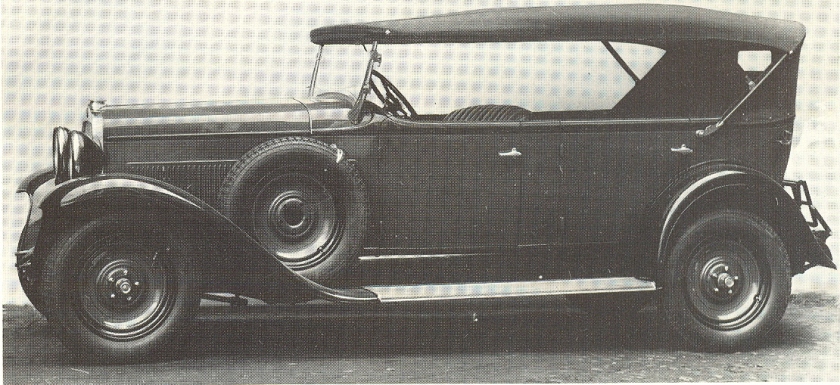
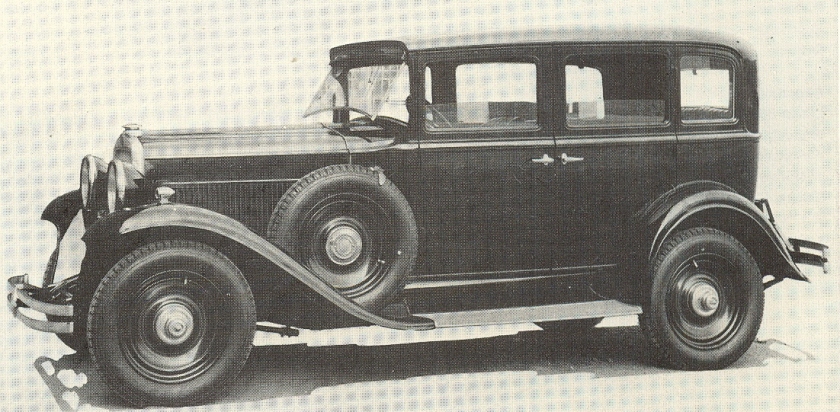
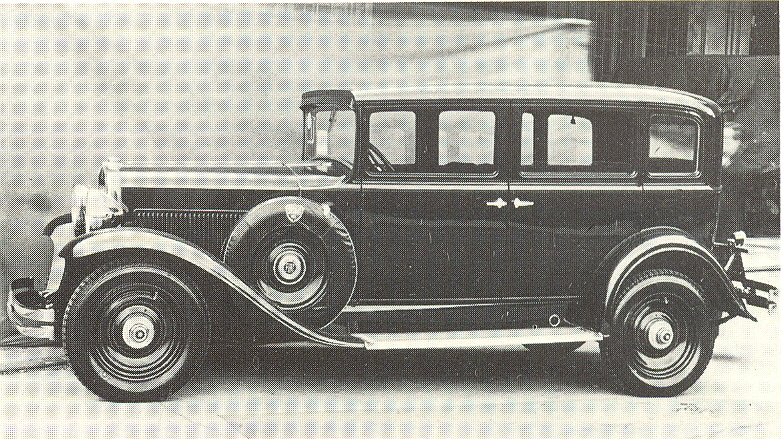
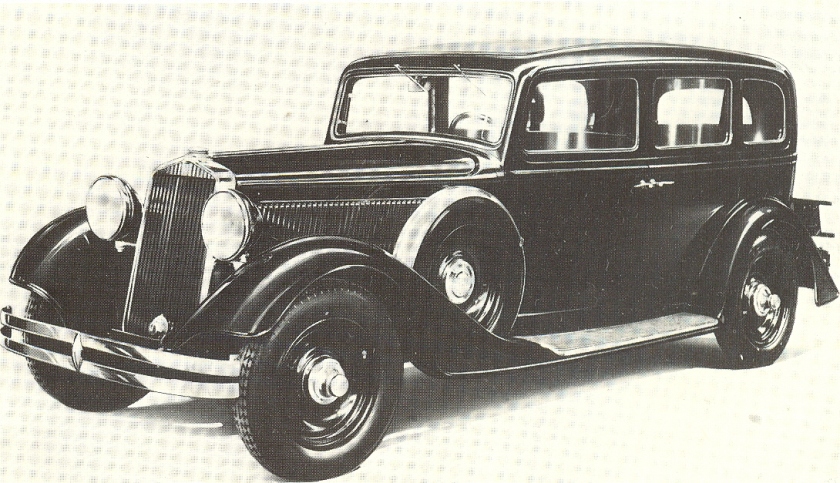
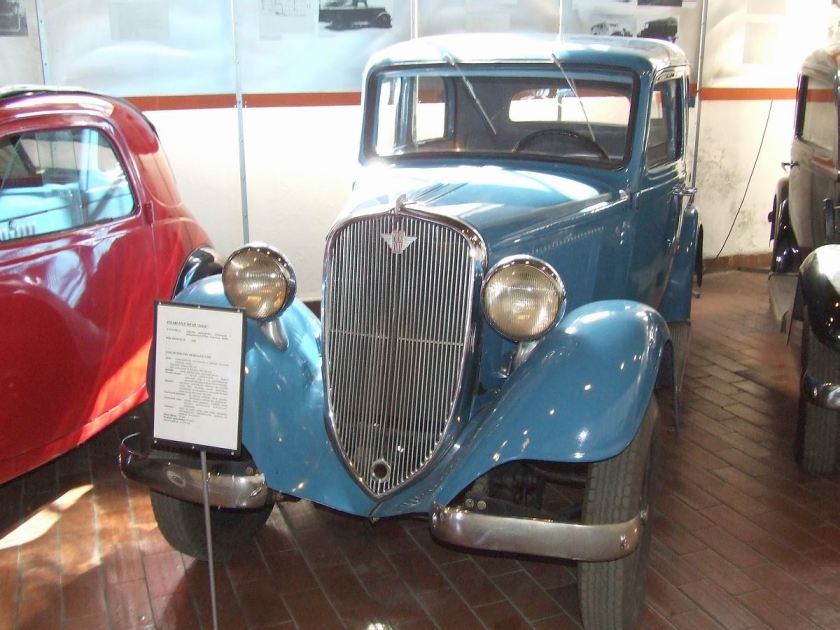
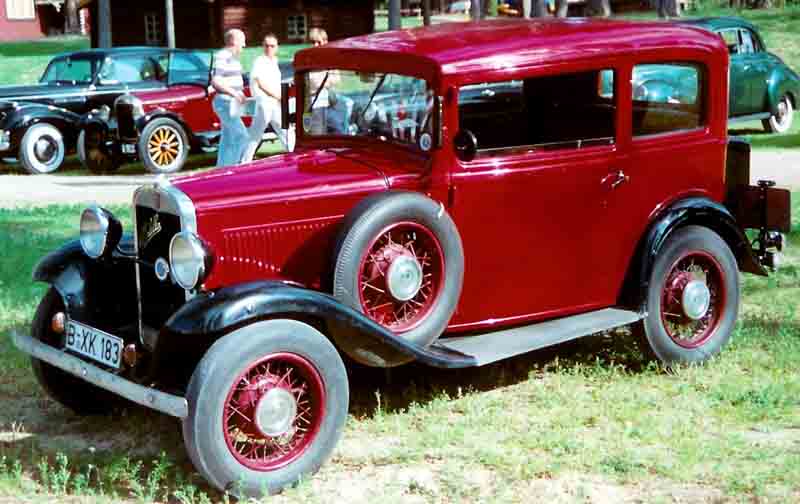
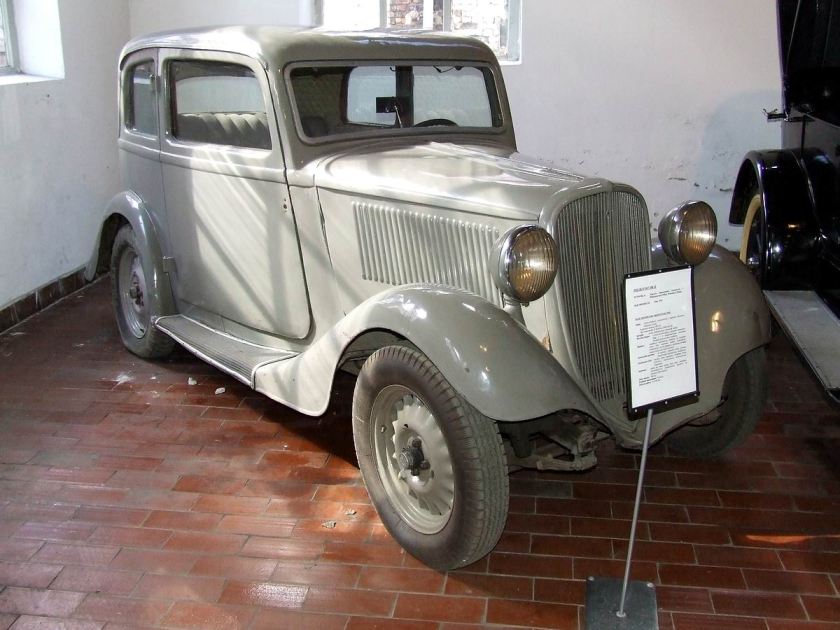
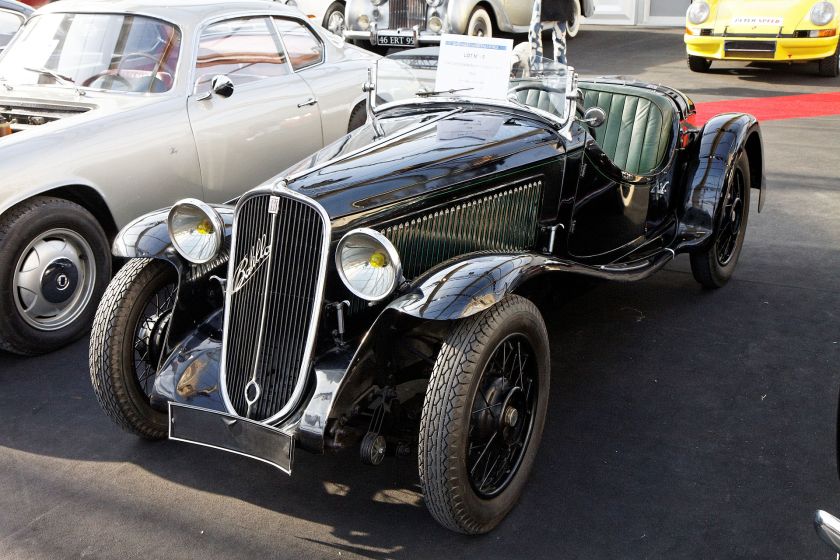
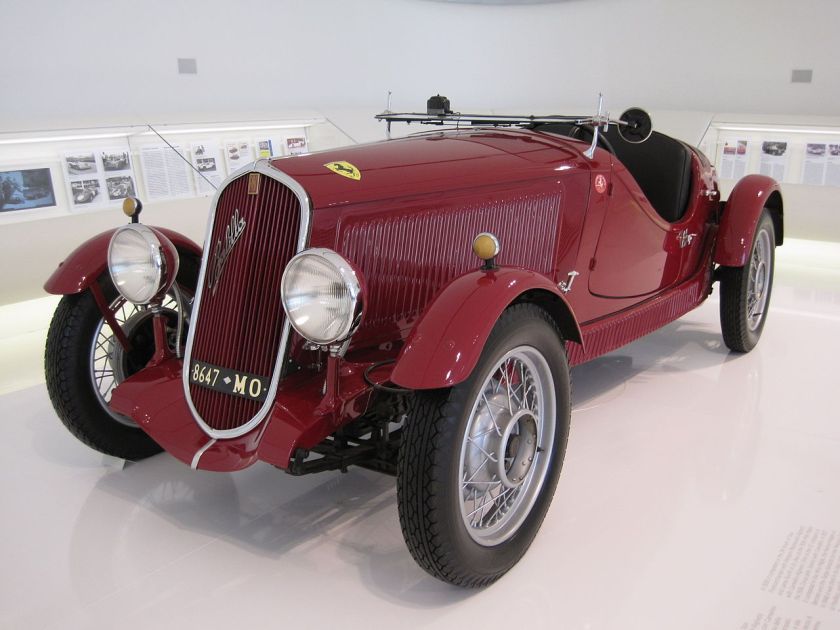
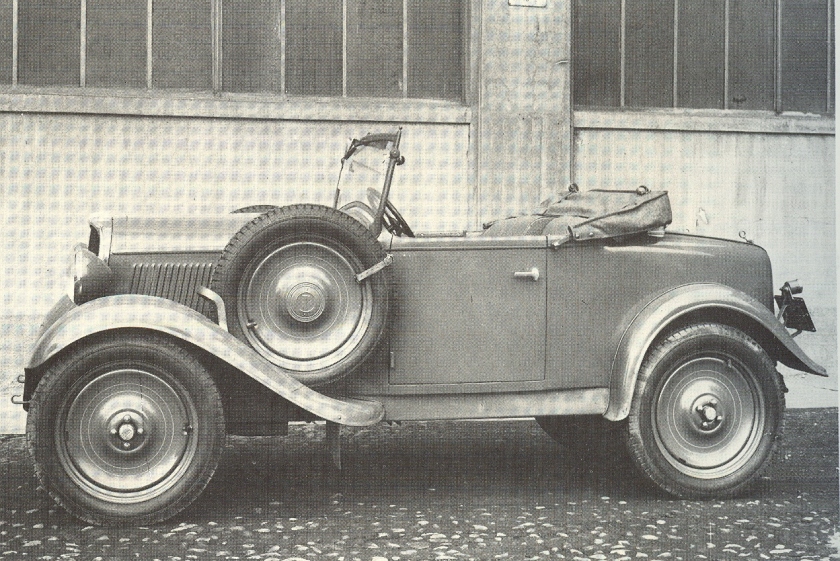
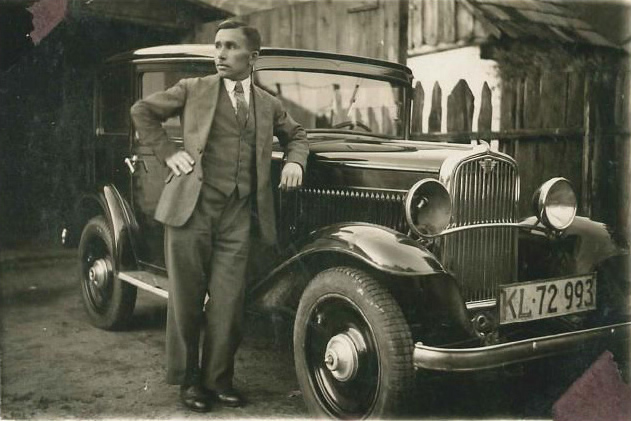
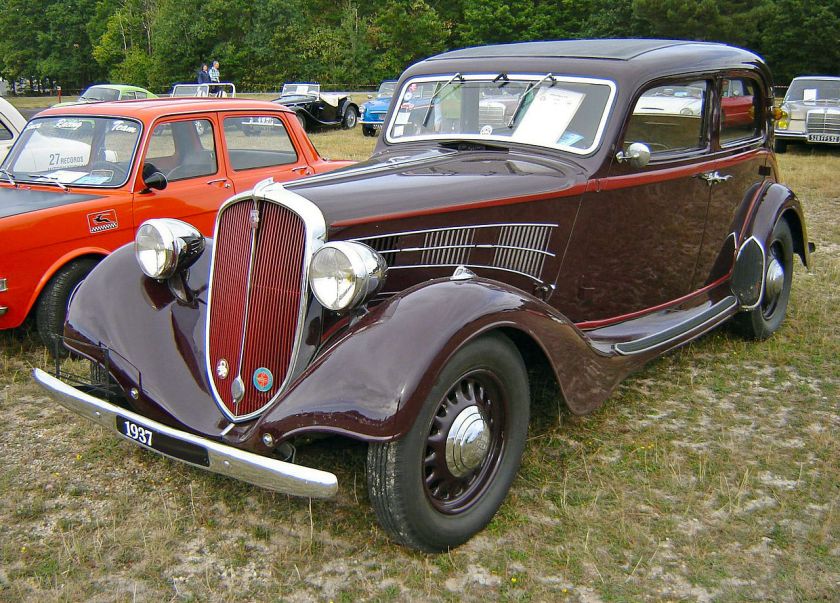
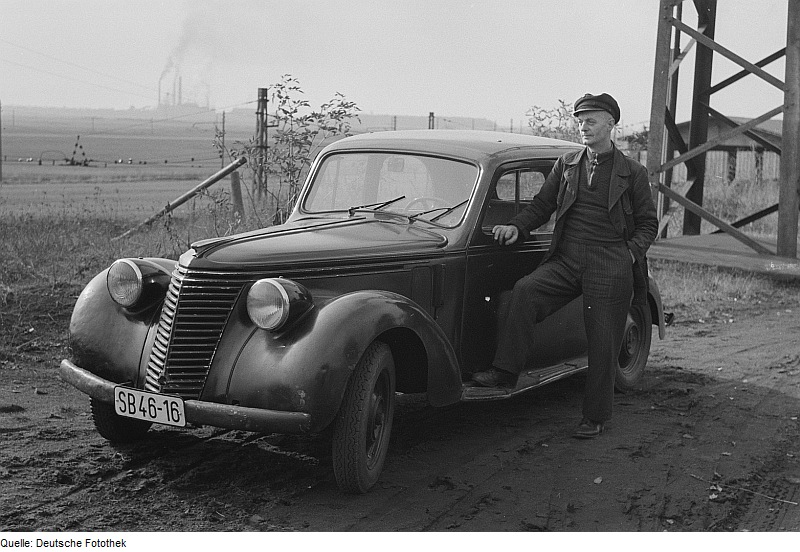
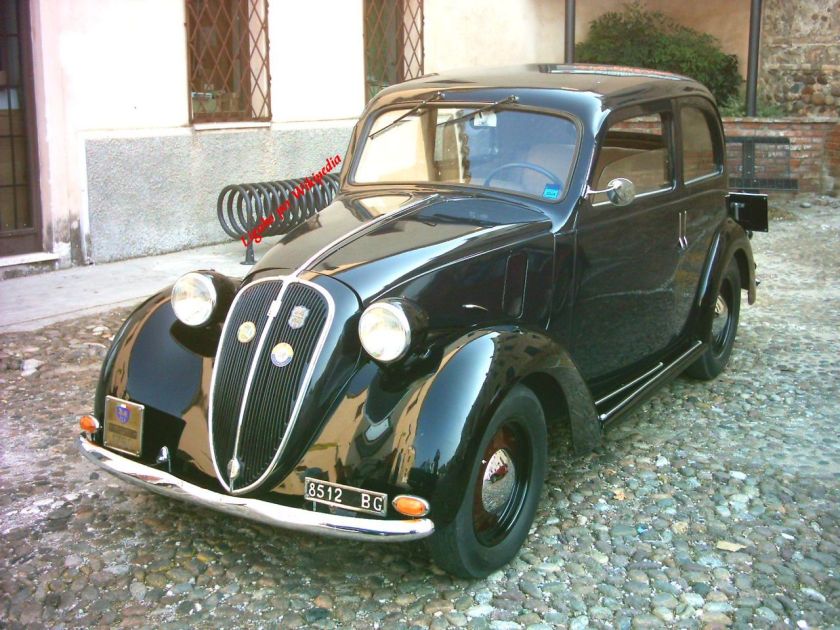
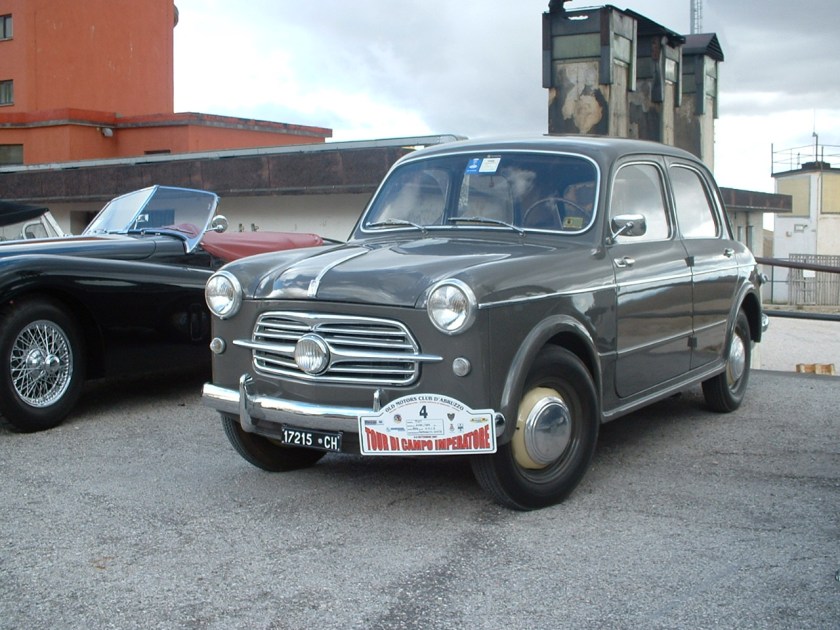
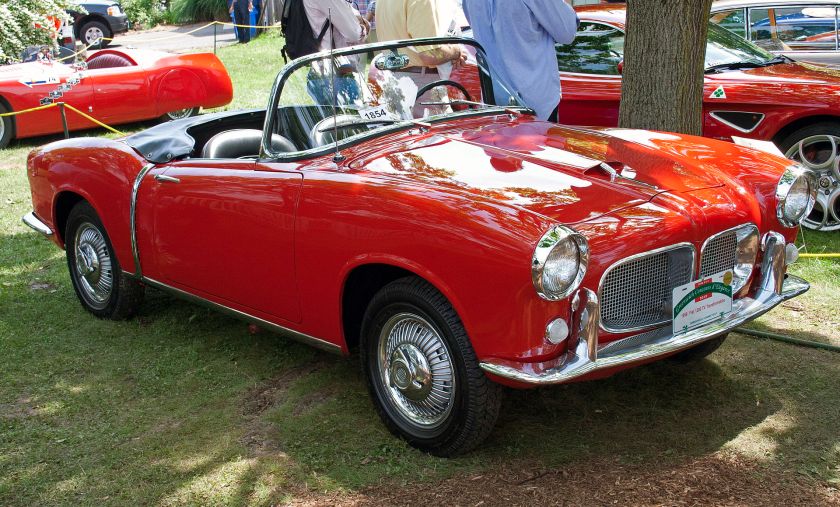
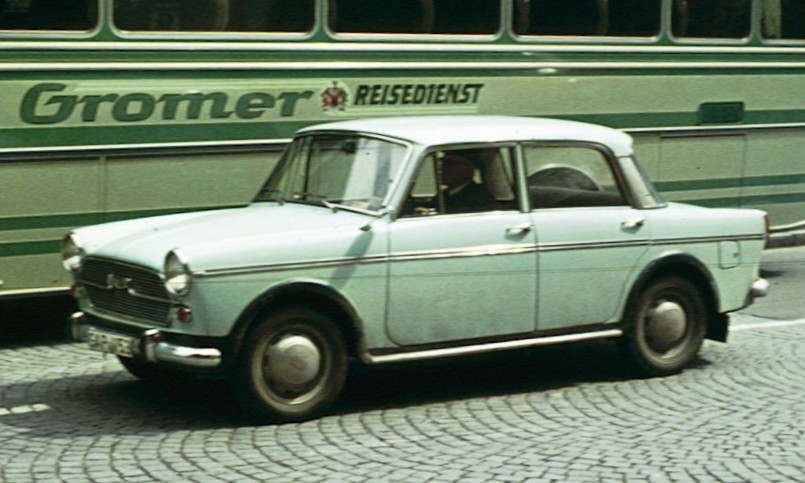
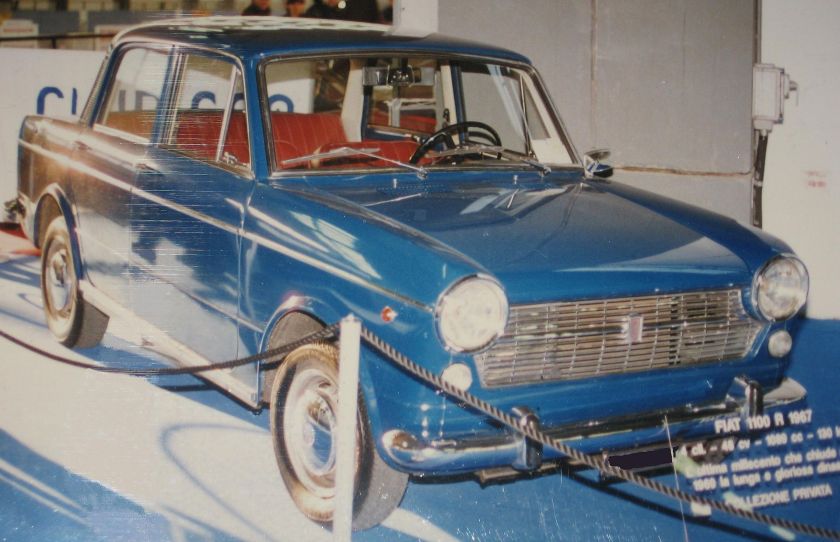
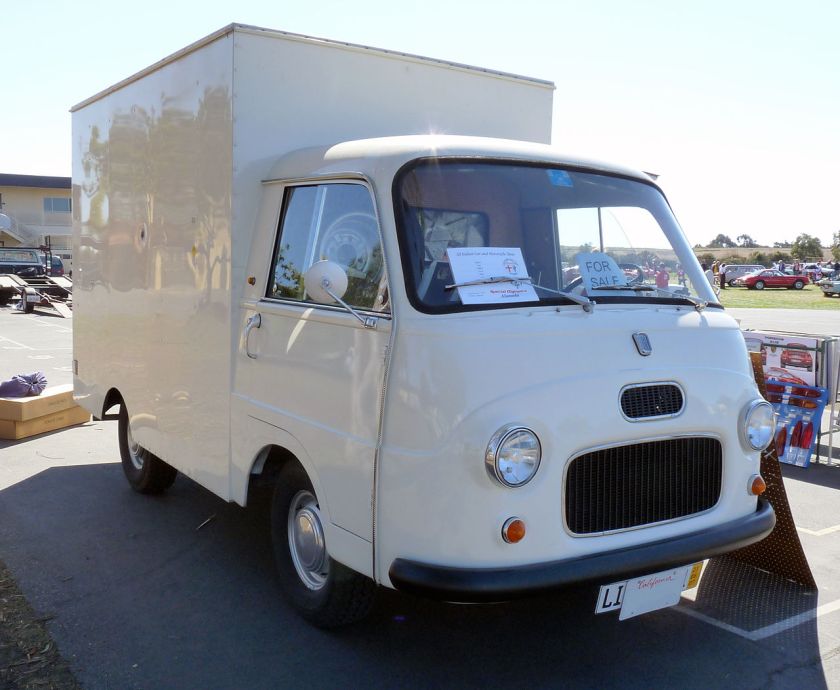
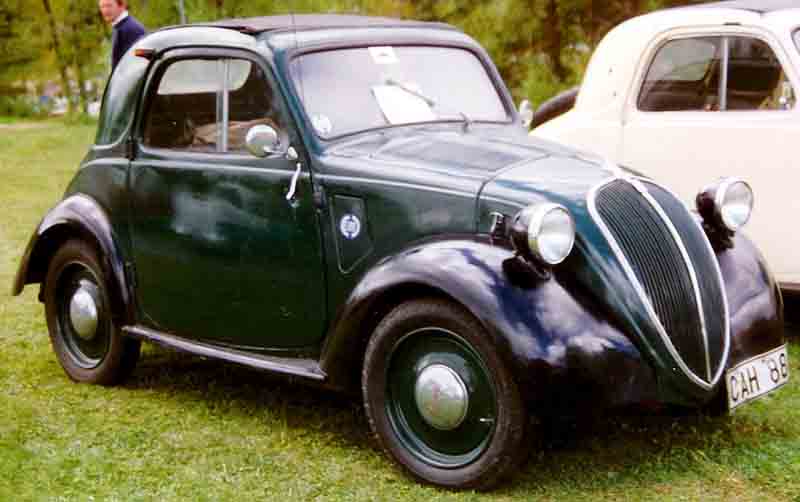
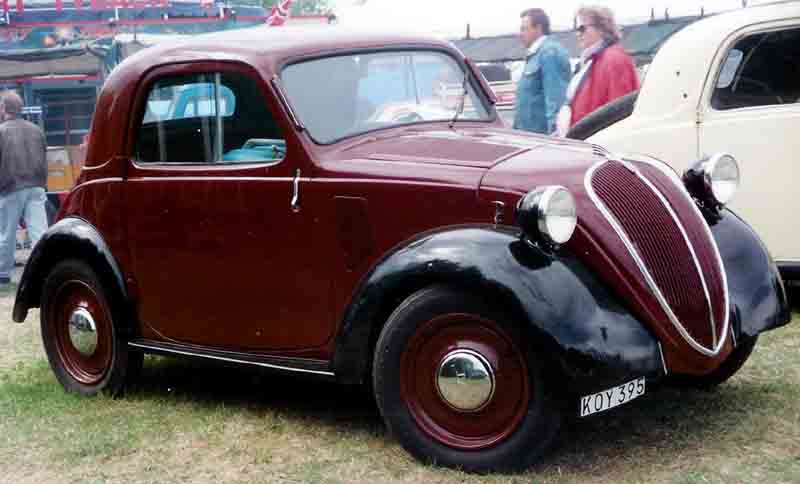
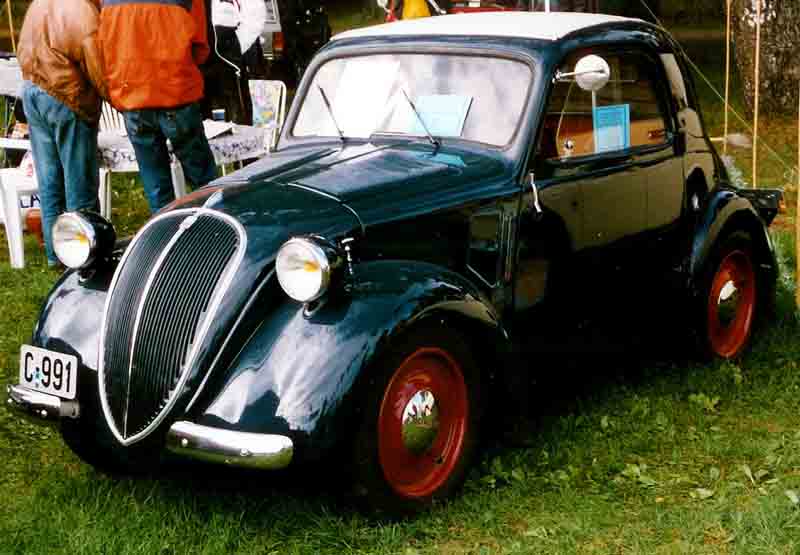
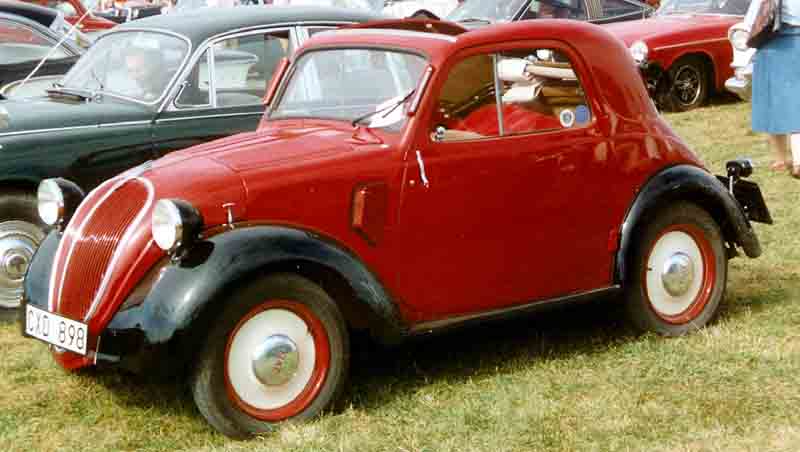
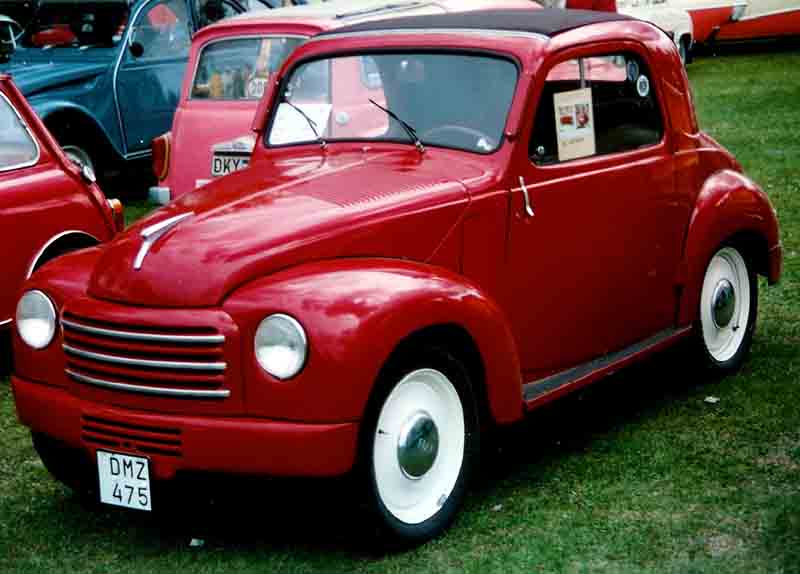
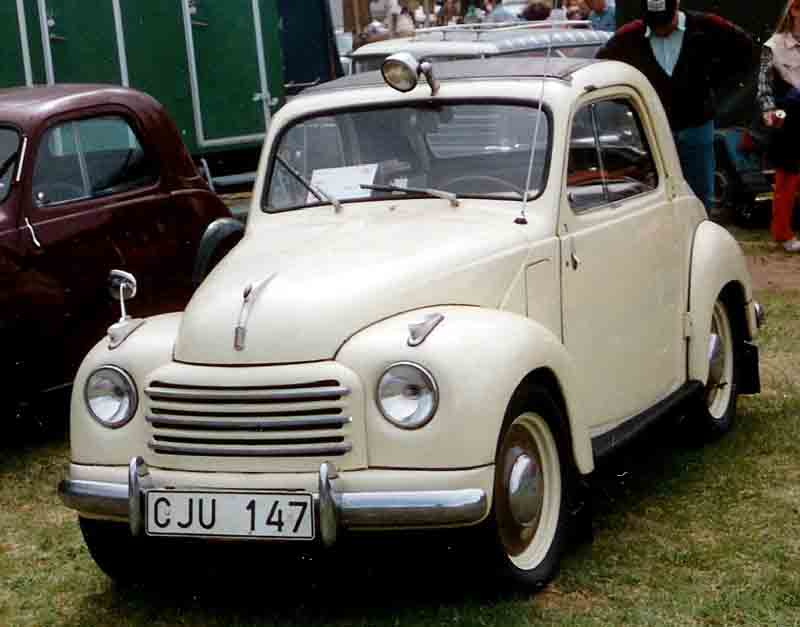
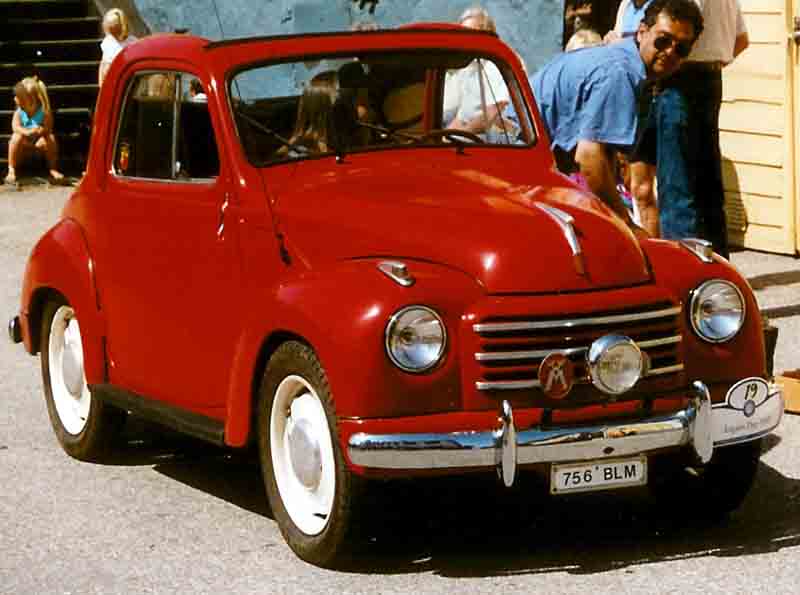
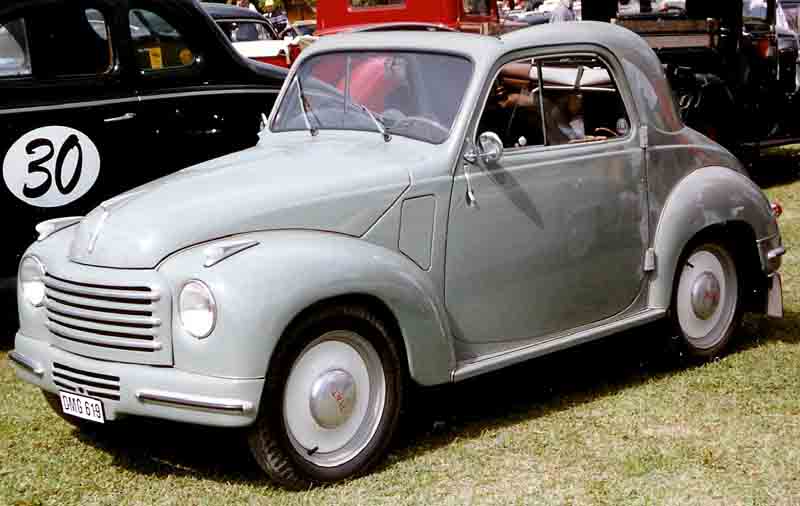
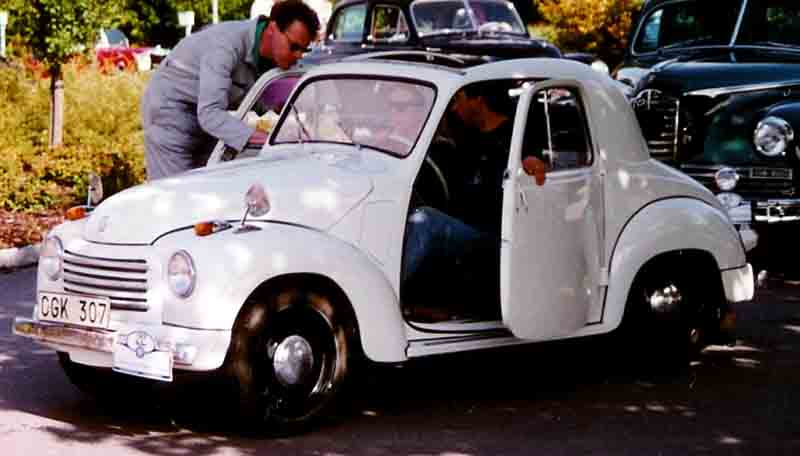
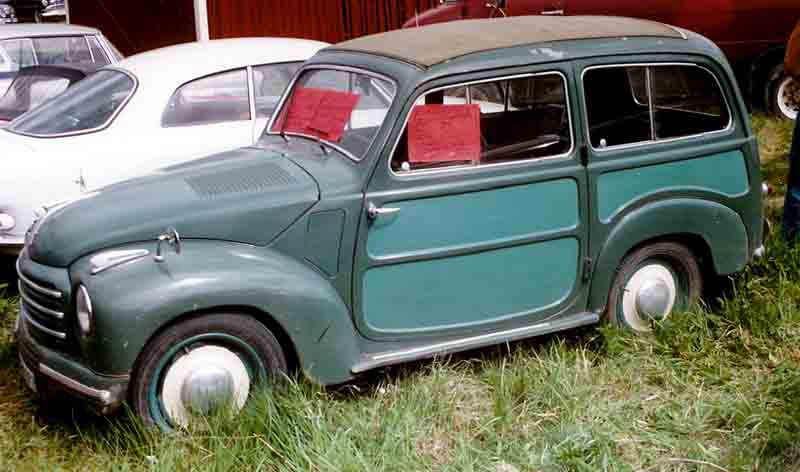
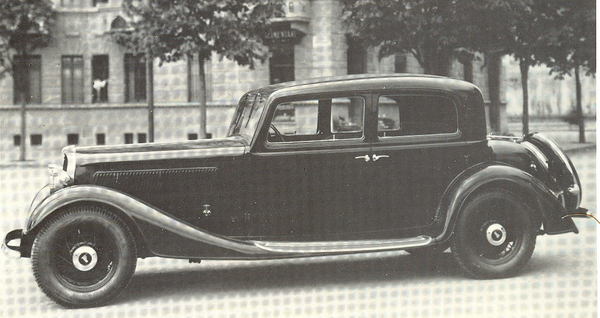
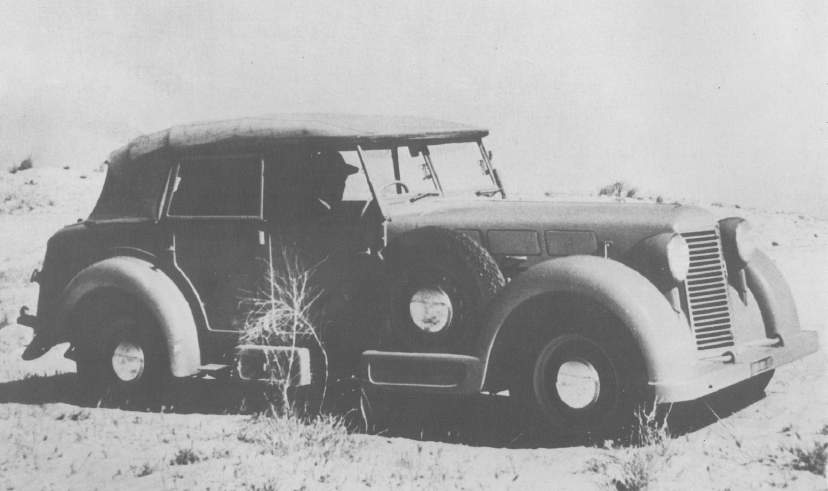
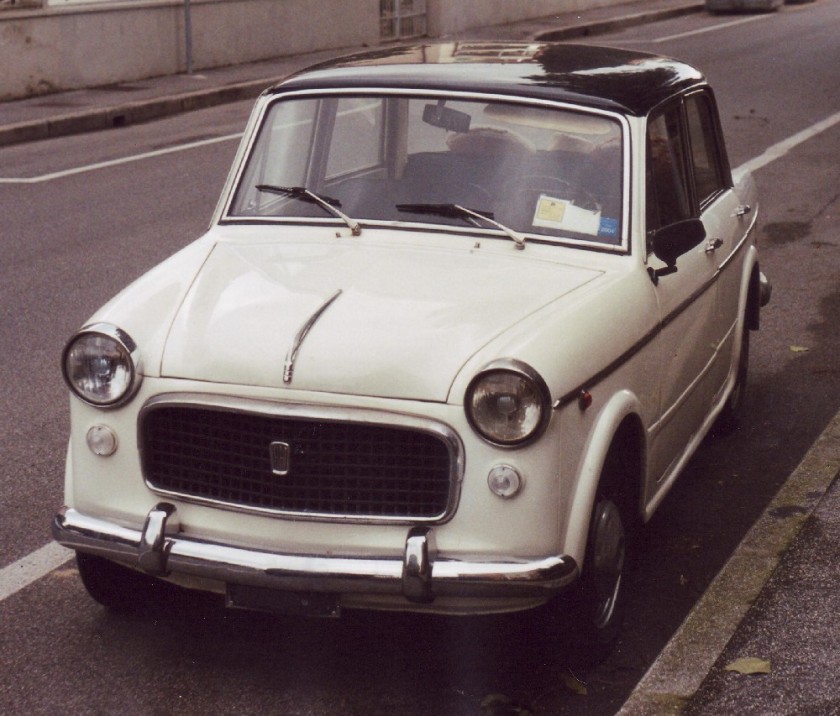
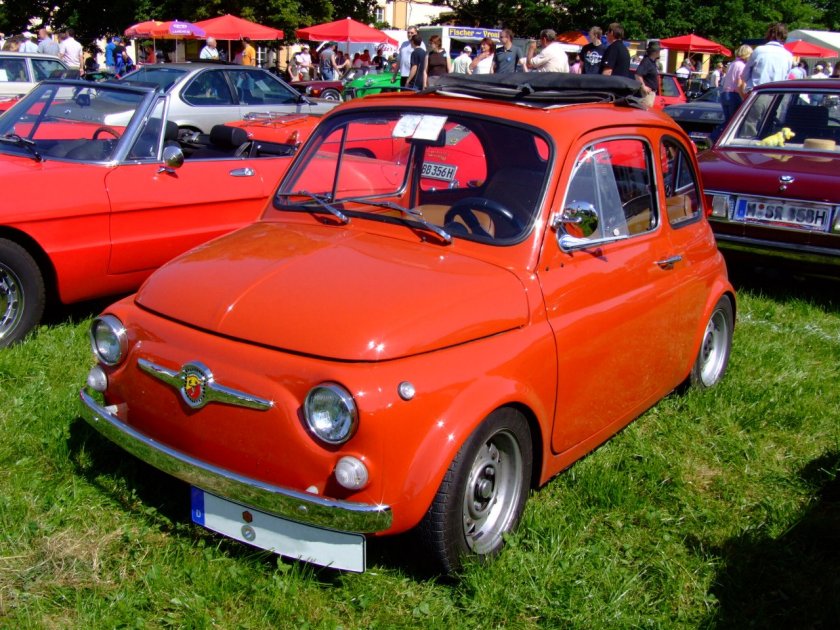
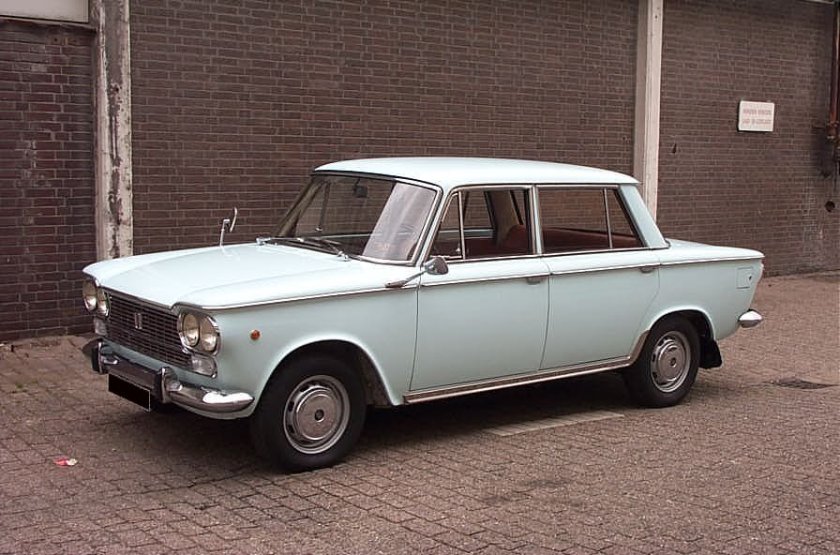
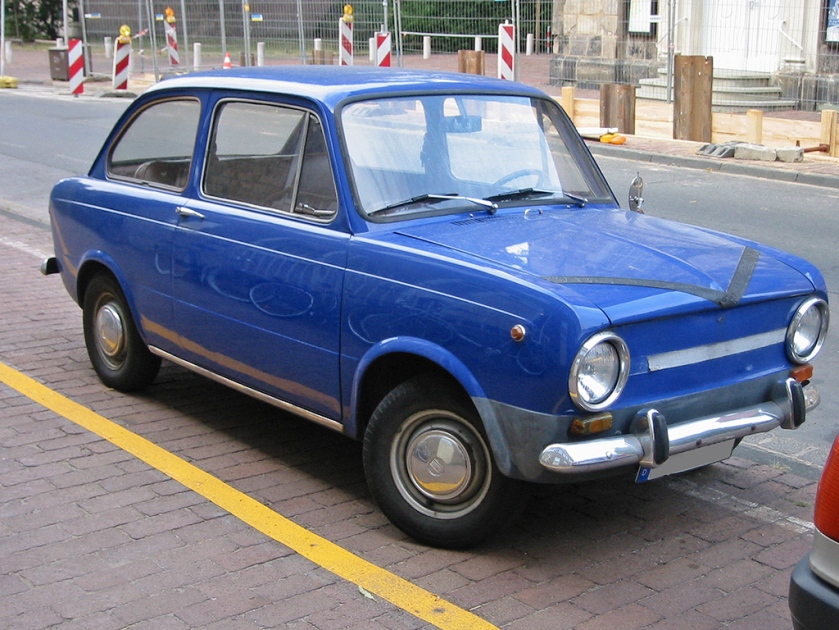
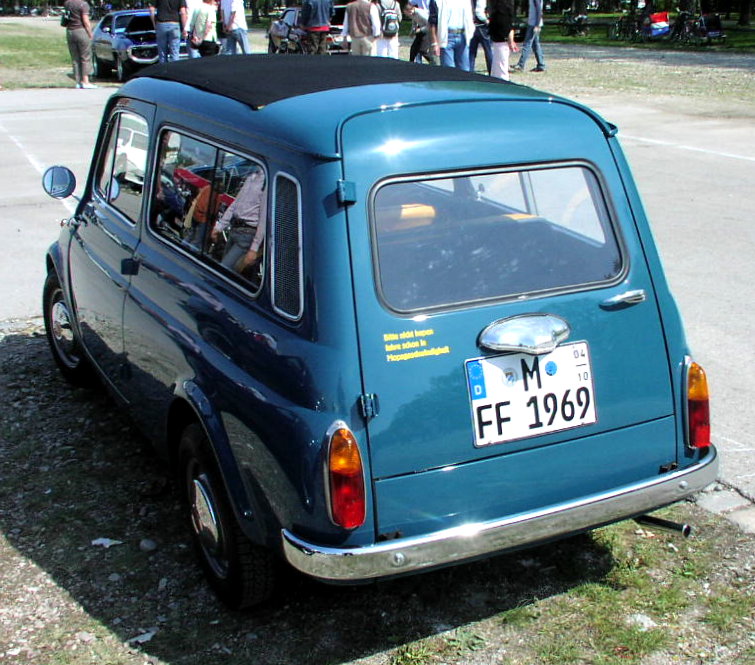
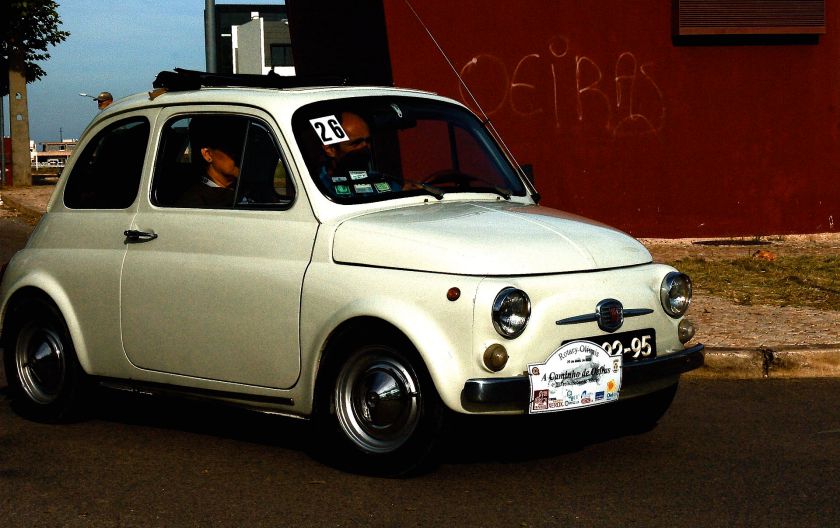
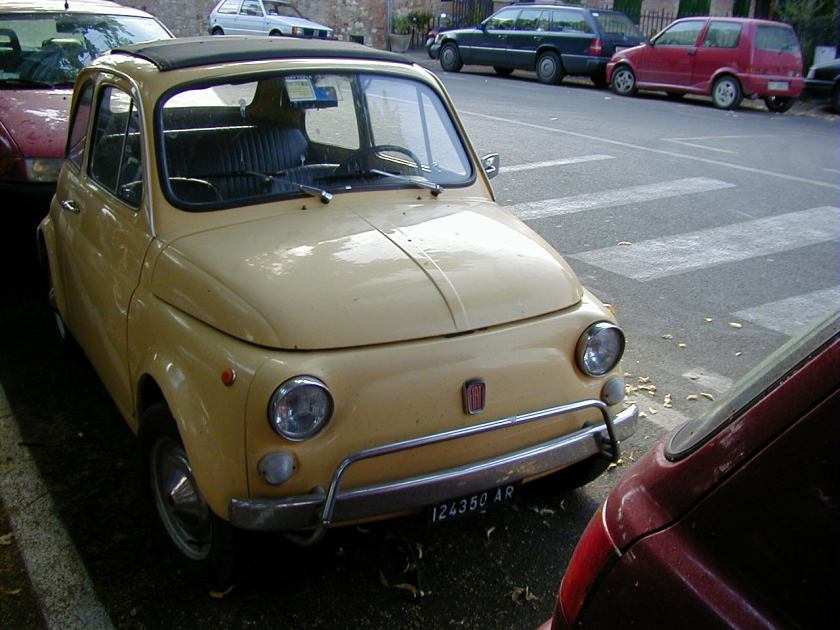
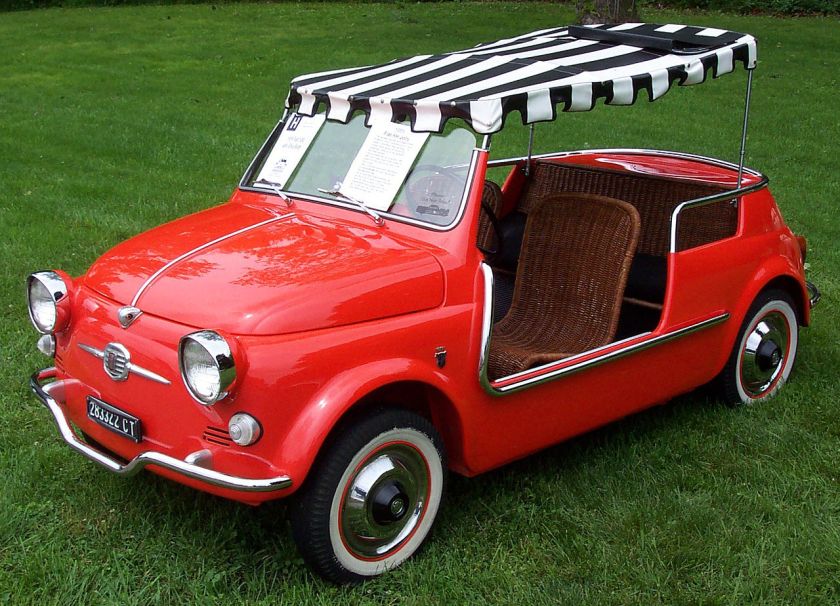
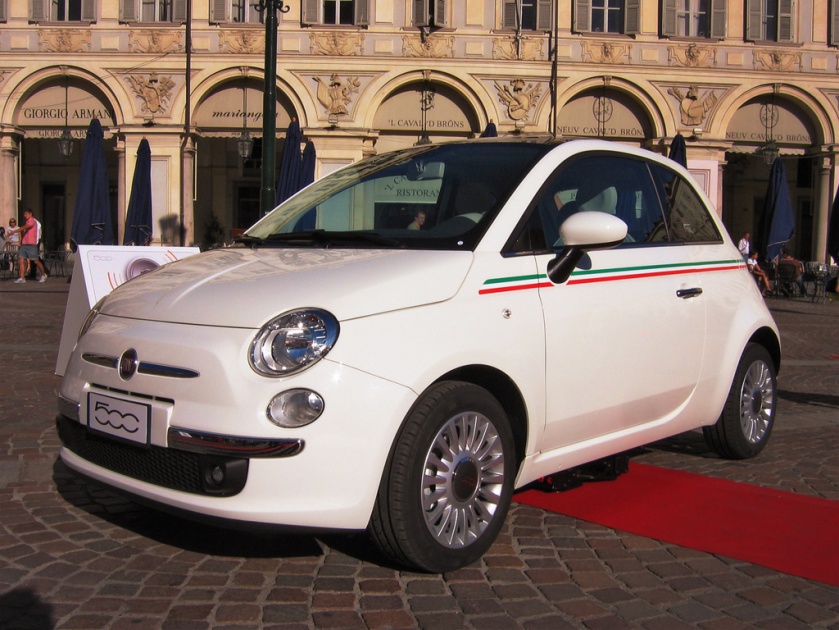
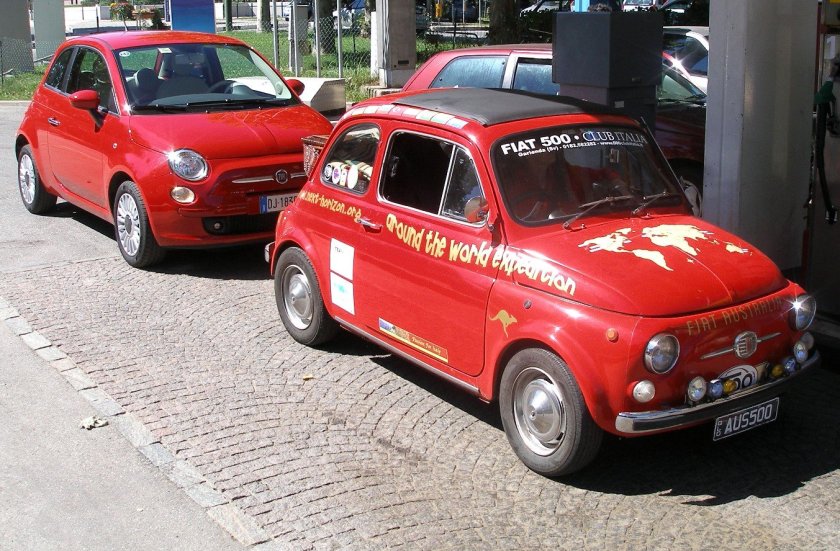
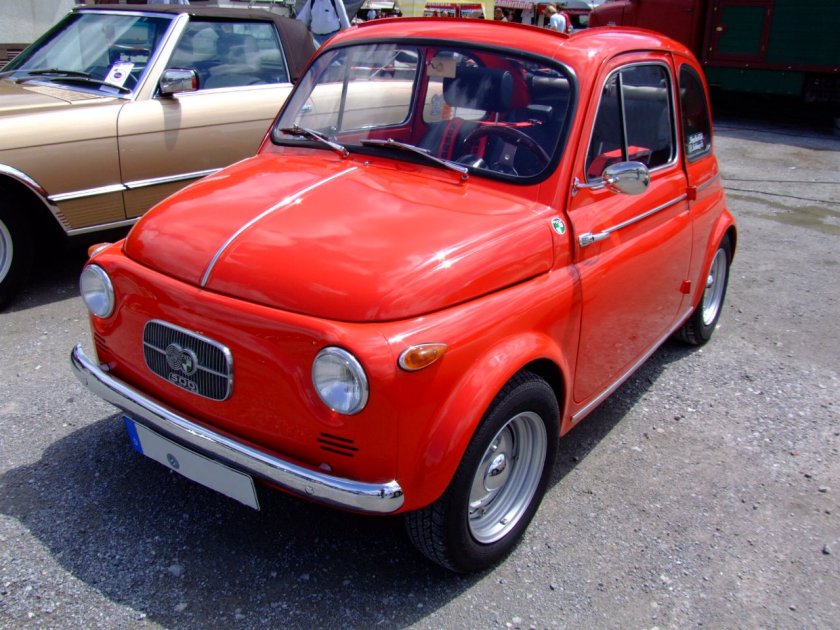
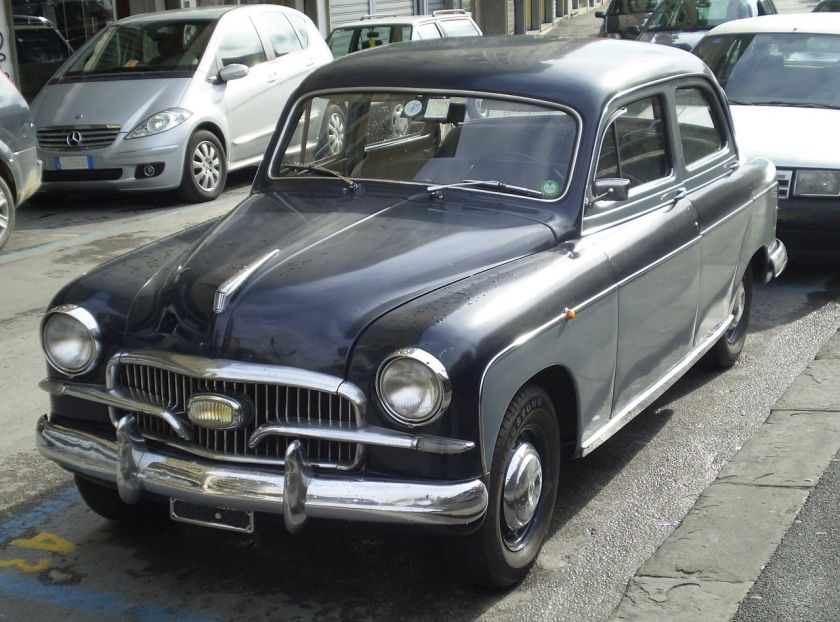
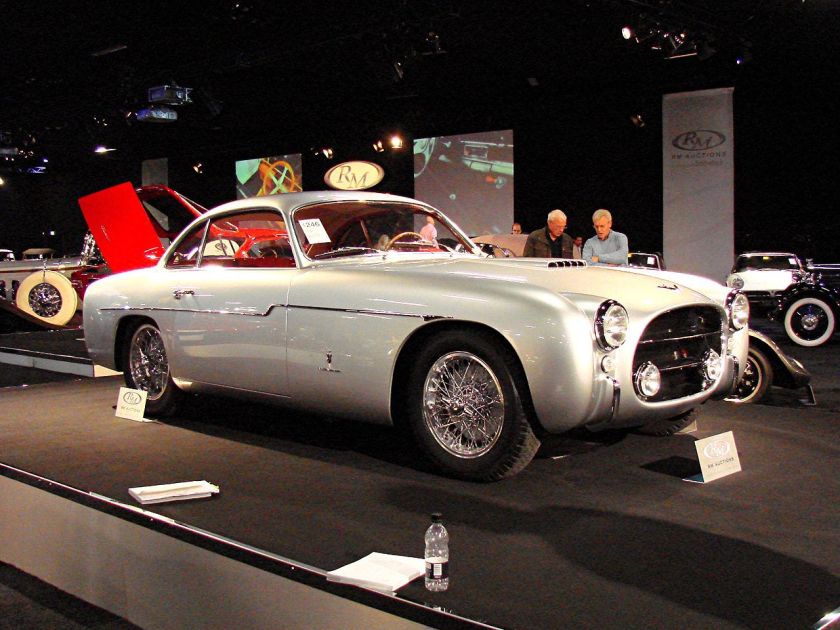
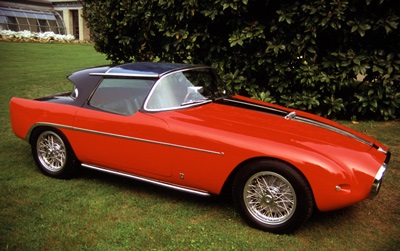
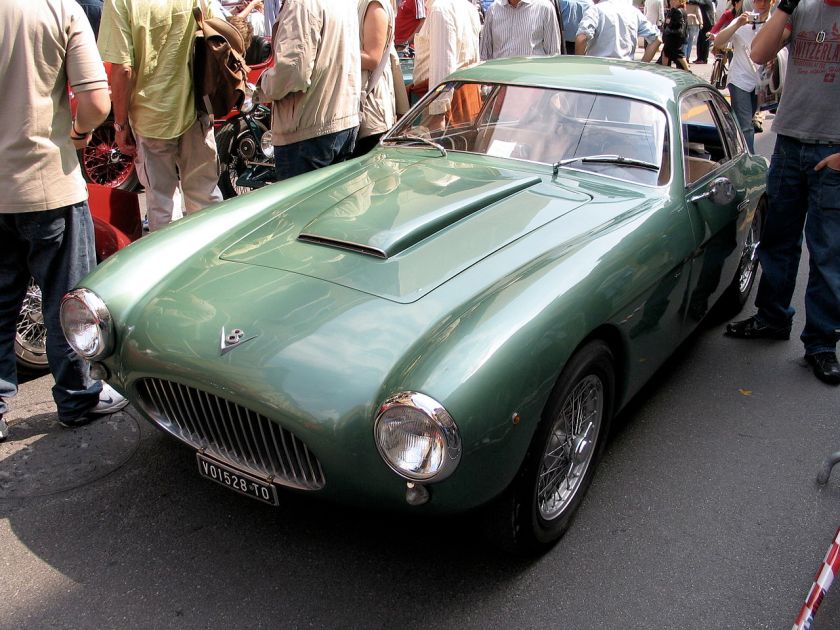
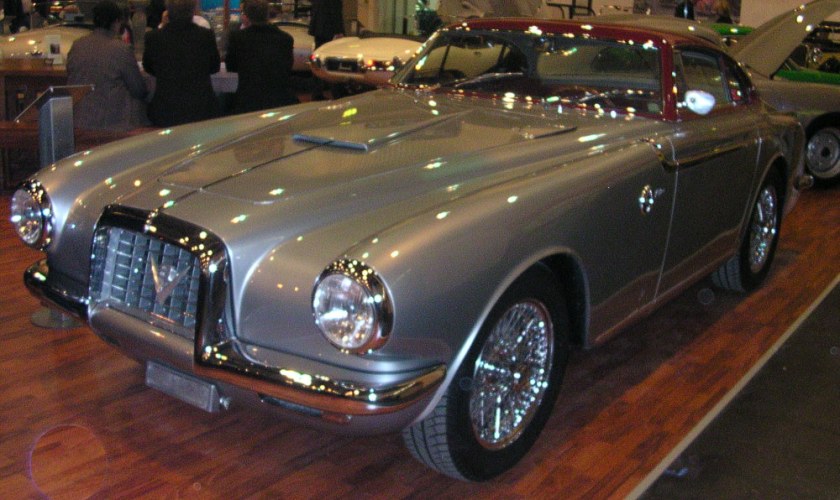

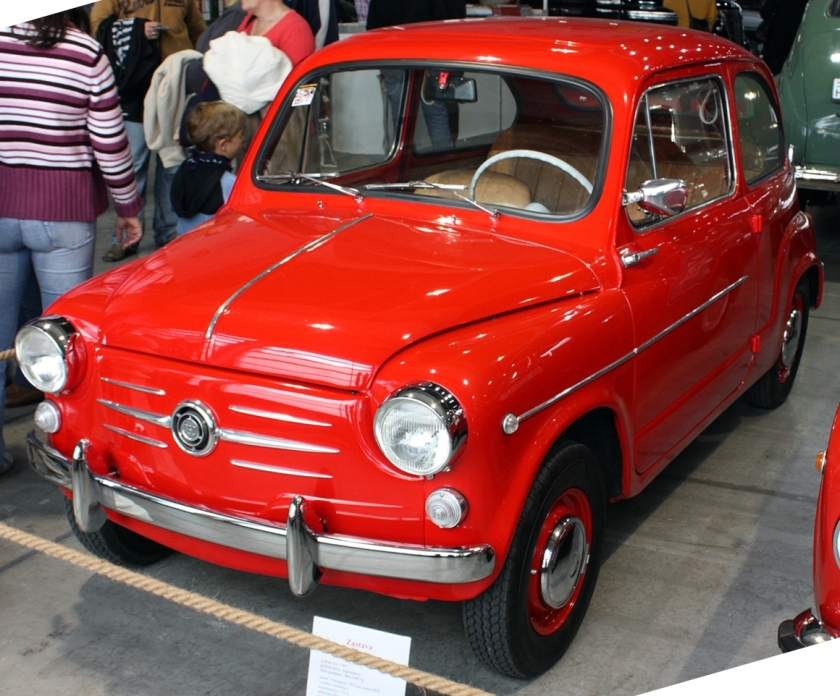
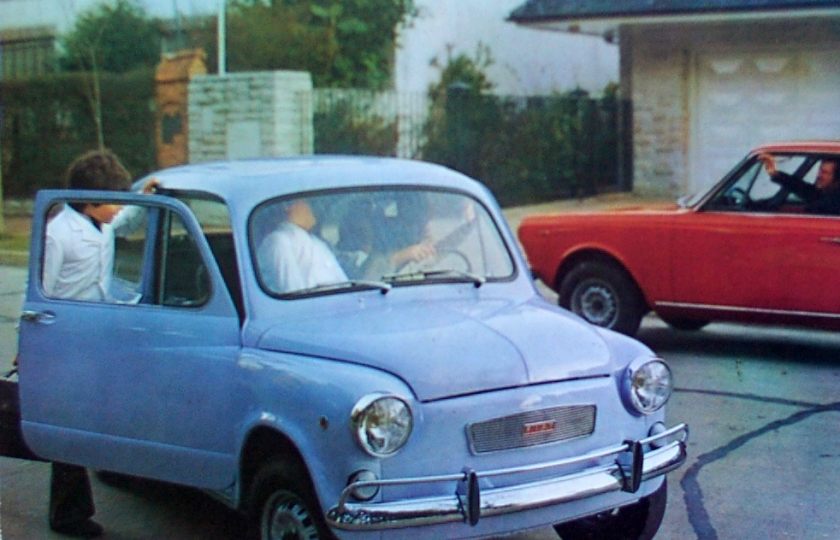
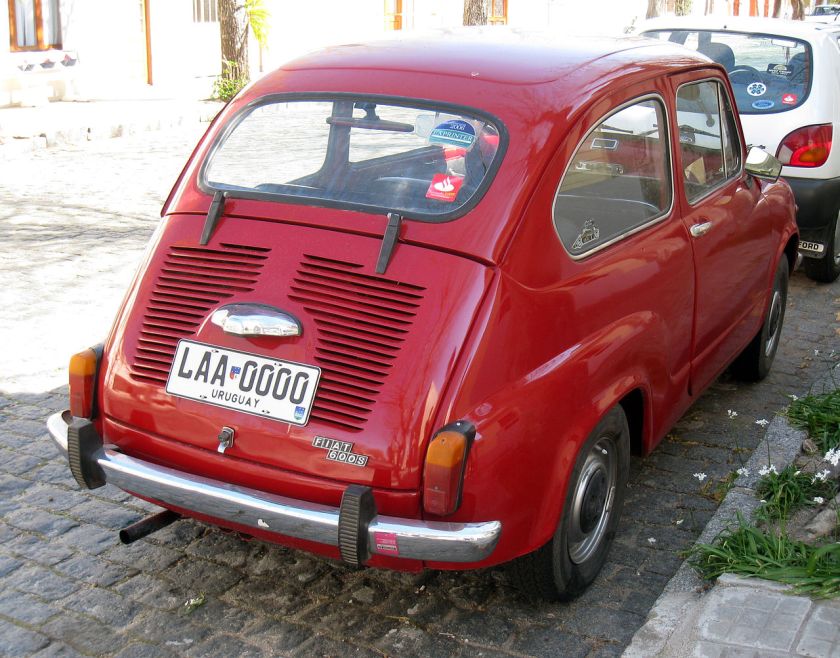

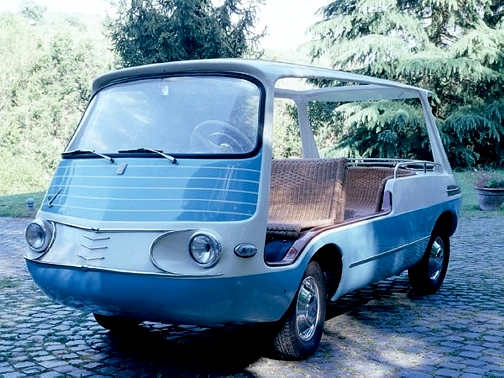
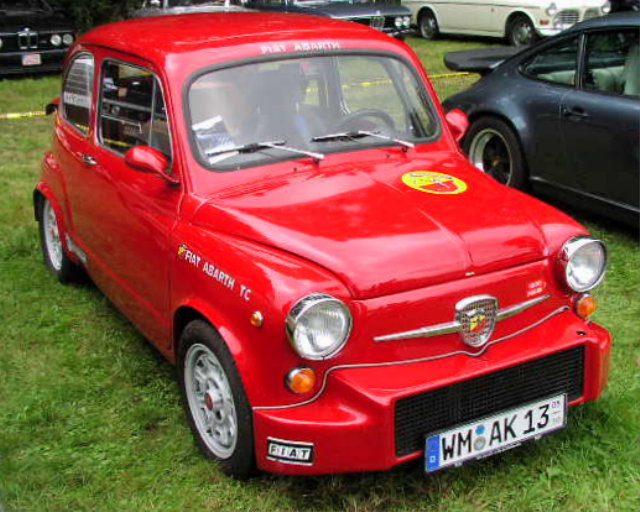
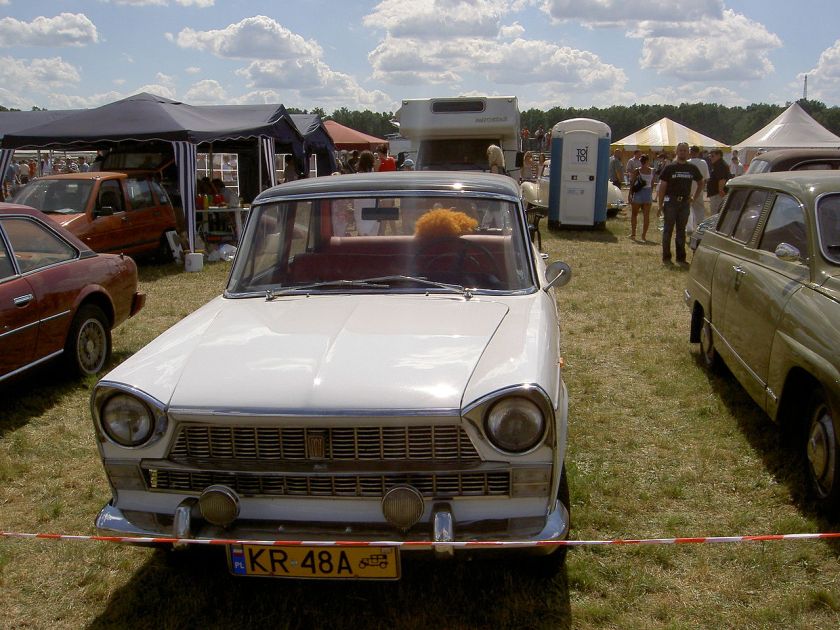
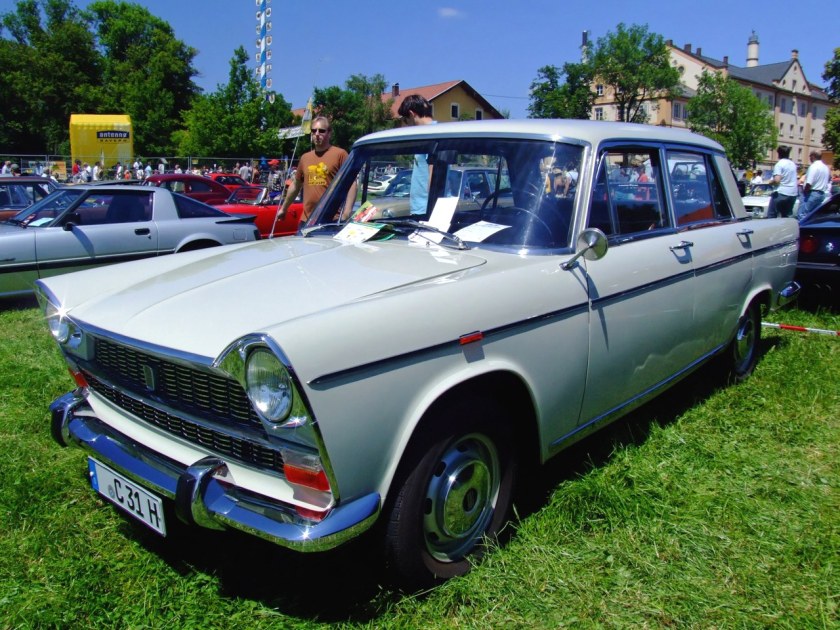
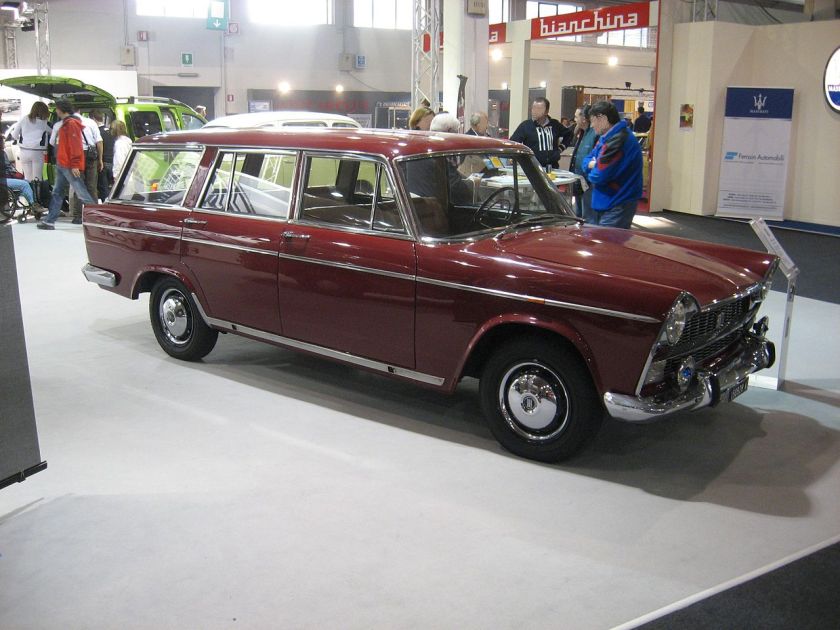
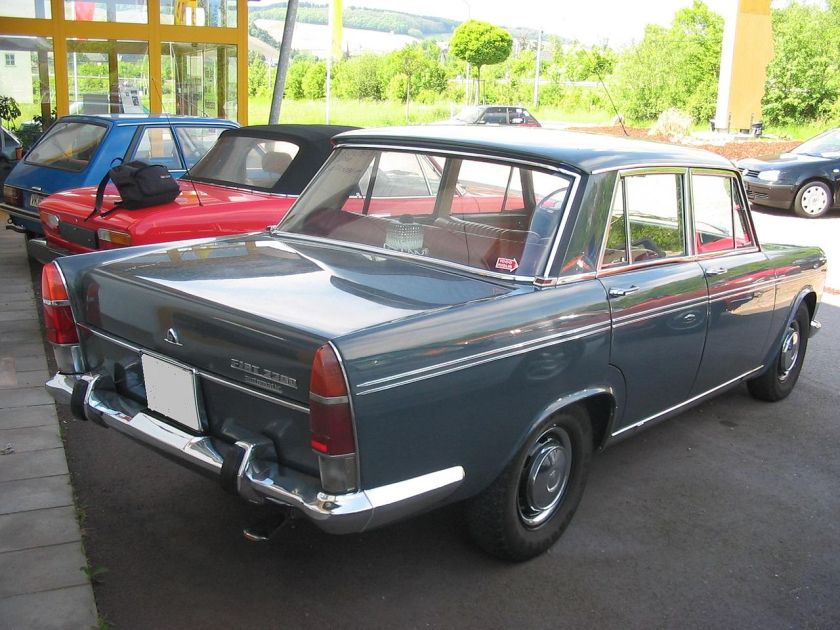
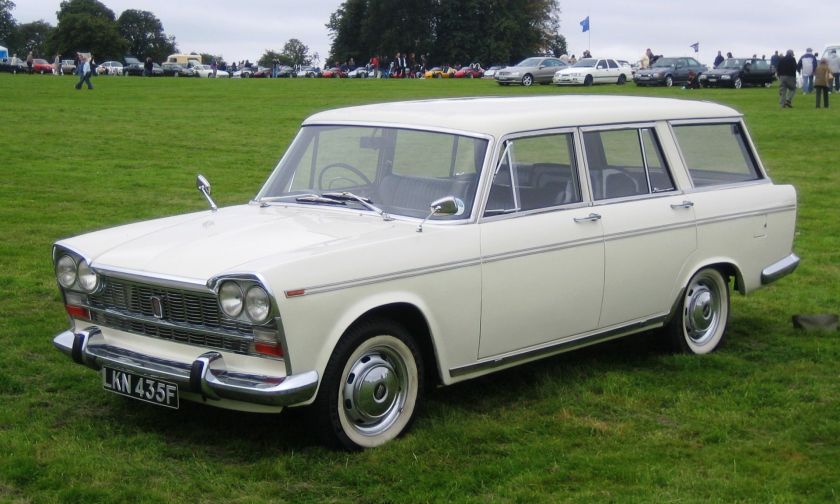
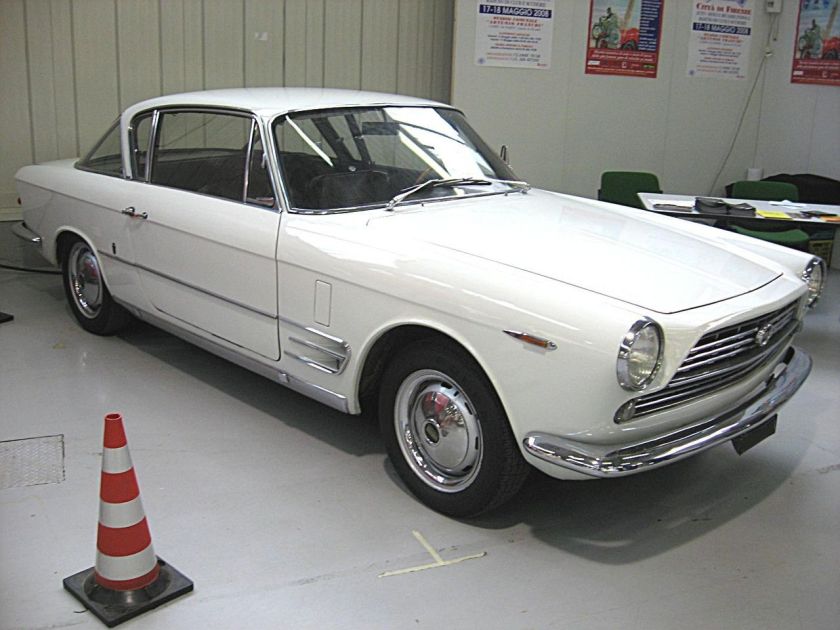
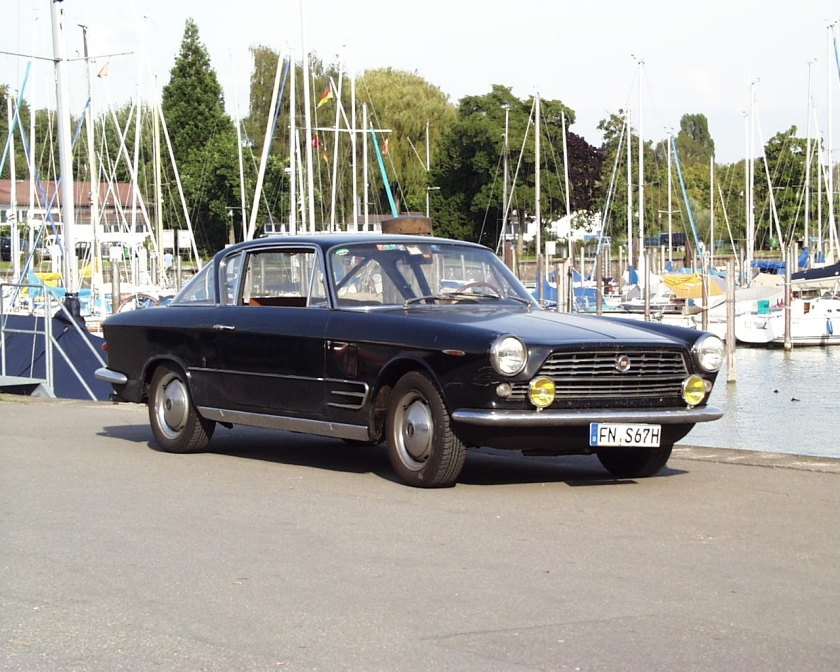
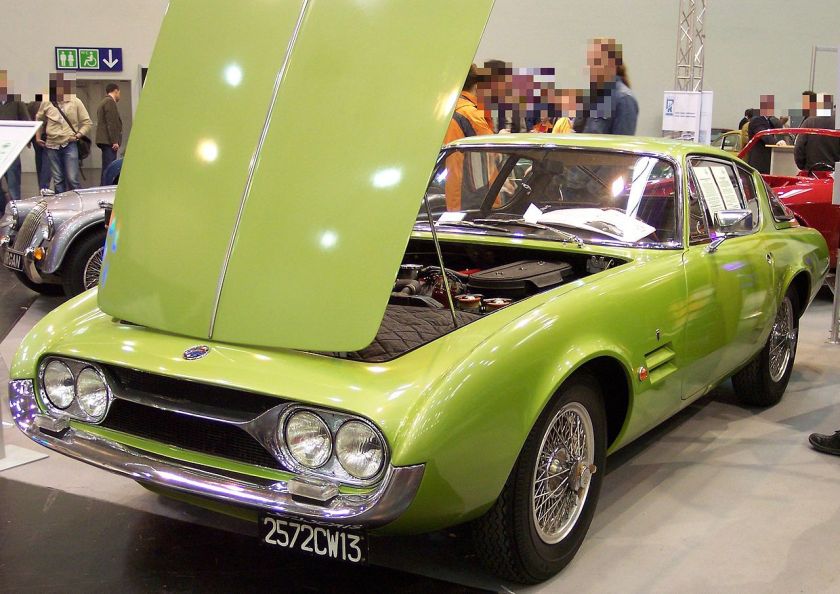
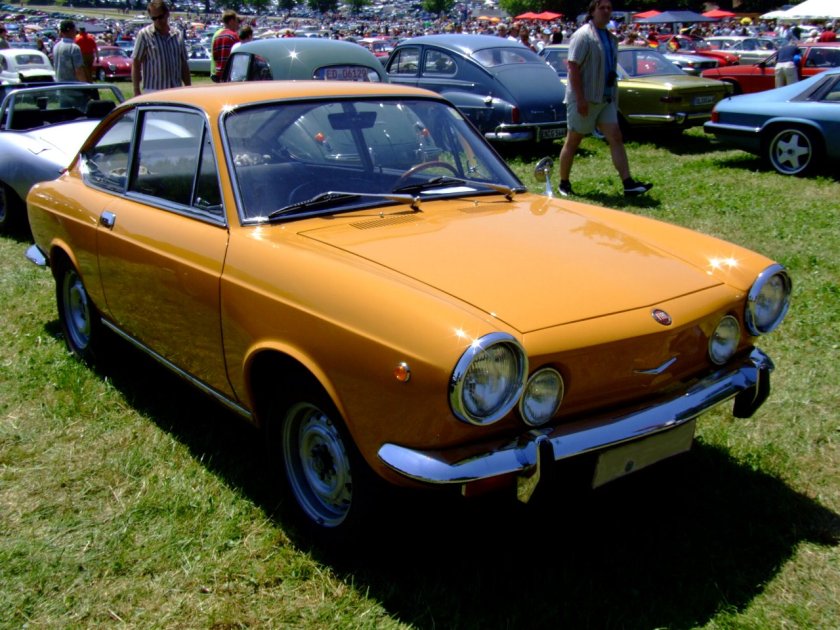
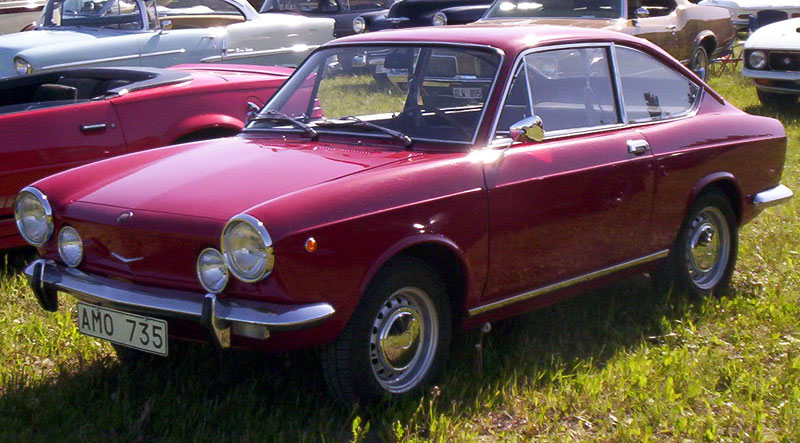
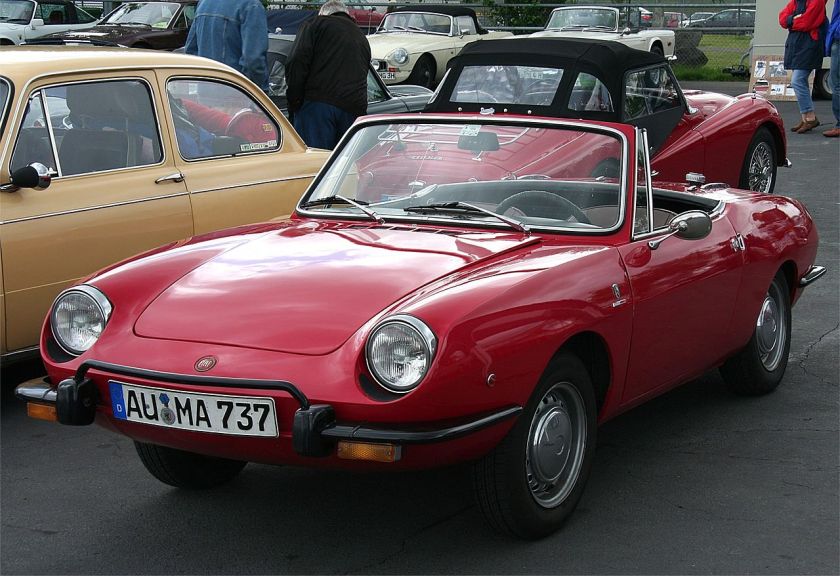
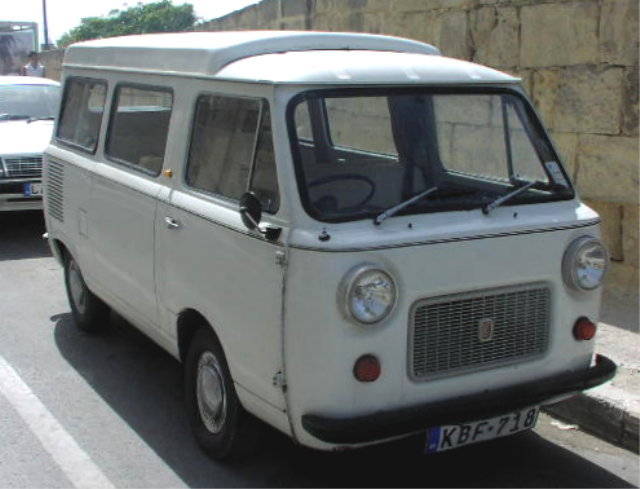
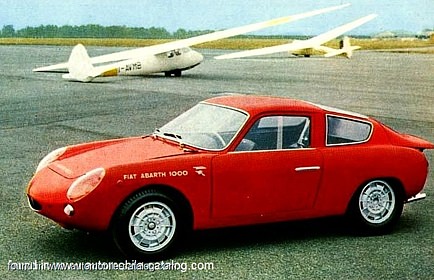
![1967 Fiat Abarth 1000 OTS 1965-1970 (1967) (01) [AB1]](https://myntransportblog.wordpress.com/wp-content/uploads/2015/02/1967-fiat-abarth-1000-ots-1965-1970-1967-01-ab1.jpg?w=840)
